New Zealand – The North Island
The moment our plane broke through the puffy, cotton wool clouds, we were struck by the beauty of Auckland, which snuggles between the Hauraki Gulf and the Tasman Sea. It has a total of seven islands, in addition to inlets, narrow bays, and natural harbors.
After the fierce storms of early March, the islands were carpeted in bright green grass, trees were on steroids, and the waters glistened in shades of turquoise and deep blue.
Welcome to New Zealand!
We had booked into a small, modern, cozy boutique hotel, Ohtel Auckland, half a block from the Marina, where restaurants and bars overlook the boats and the area pulses with life, music, and energy.
After a lengthy fourteen-hour flight and airplane food, we were ravenous. We chose a seafood restaurant with a view of the Marina and the passing parade of people and savored a platter of ceviche, shrimp, mussels, oysters, and salmon, accompanied by a green salad tossed with nuts, dried cranberries, and parmesan cheese. New Zealand had a scarcity of vegetables and fruits that spring when a typhoon wreaked havoc on fields and orchards, destroying everything in its wake.
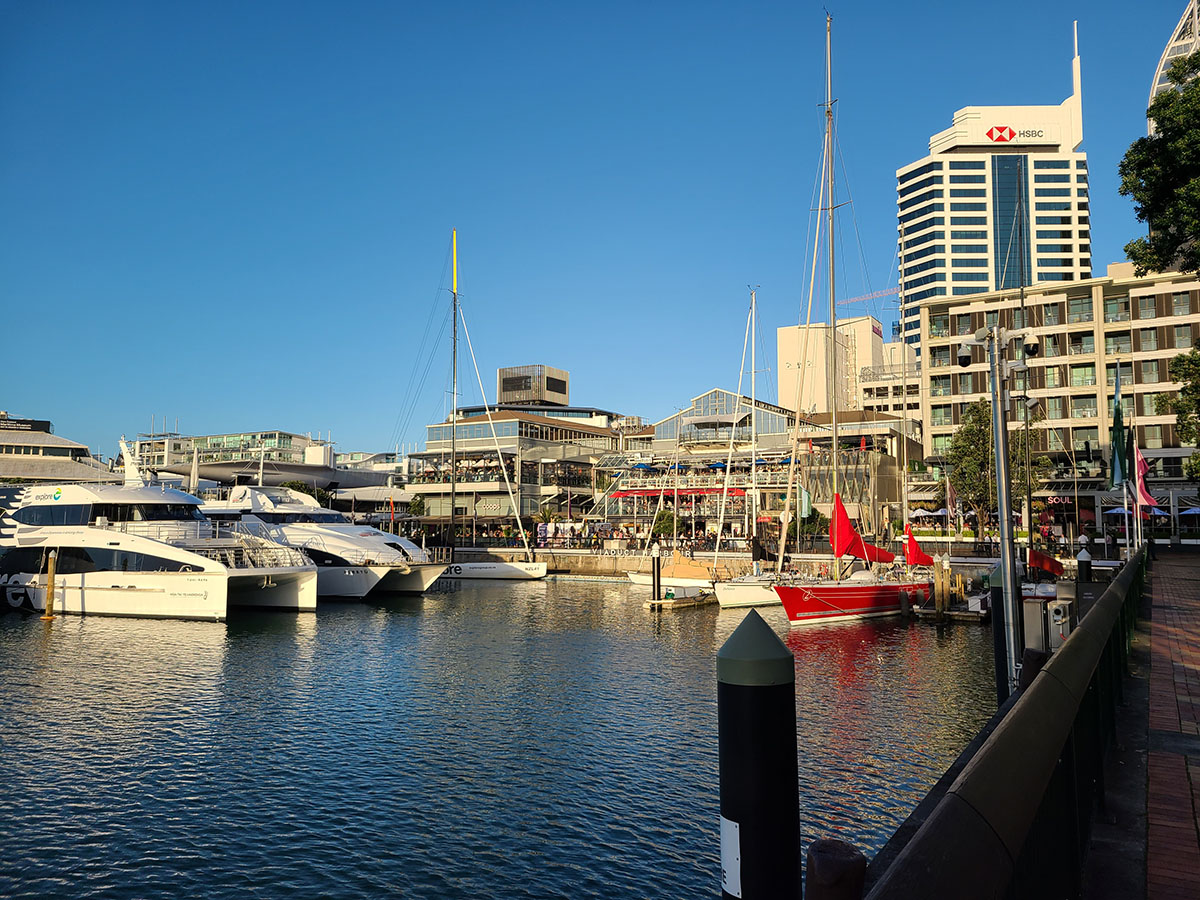
Ohtel Auckland is a ten-minute walk to the ferries that ply the waters to and from the islands and a five-minute walk to Queen and Quay Streets, where all the high-end designers and mid-range stores have a presence.
The wide, covered sidewalks of the city center are reminiscent of Johannesburg – South Africa. Both countries were British Colonies. South Africa was colonized in 1806 and New Zealand in 1840, which explains the similarities in their early architecture and construction.
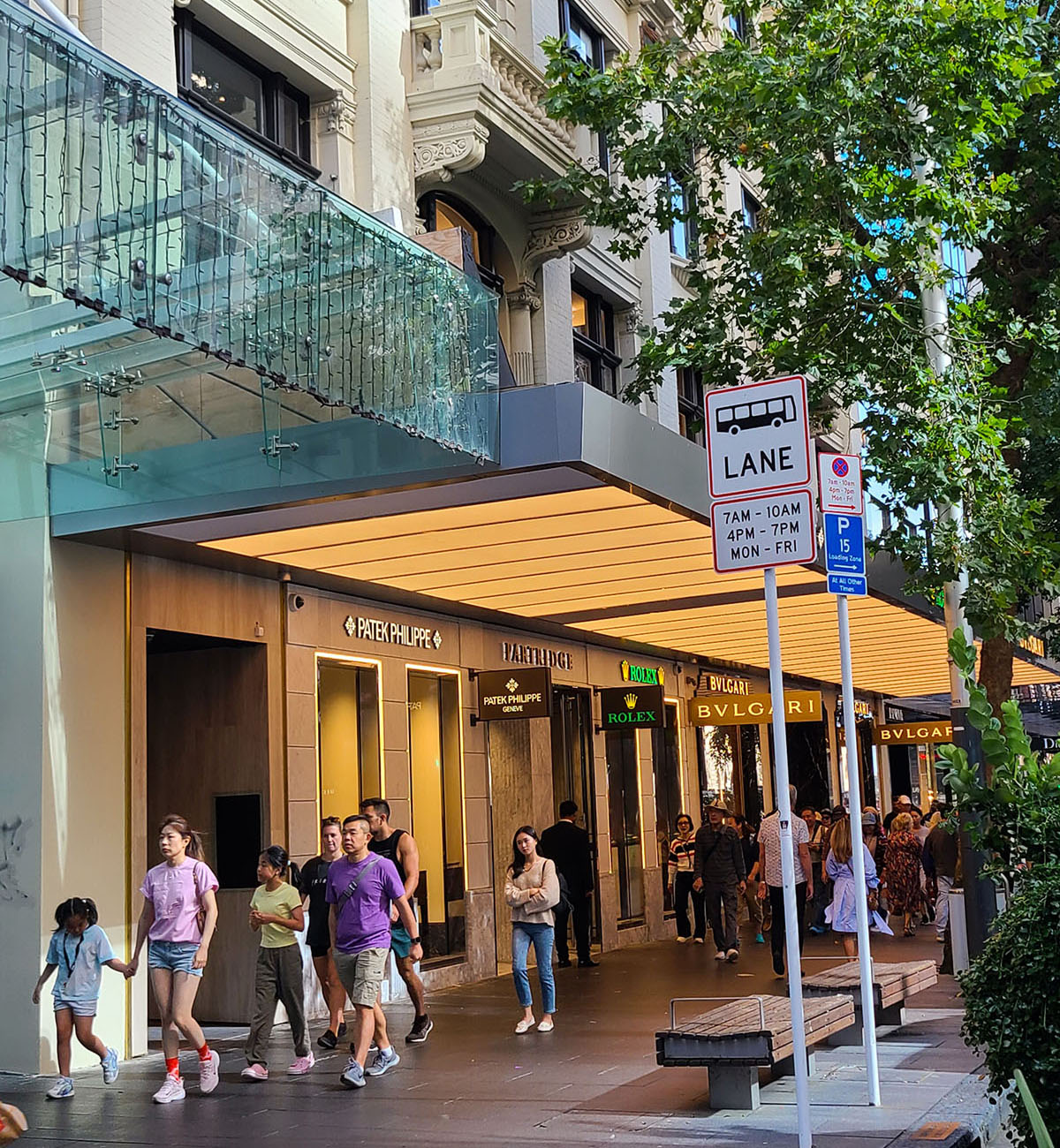
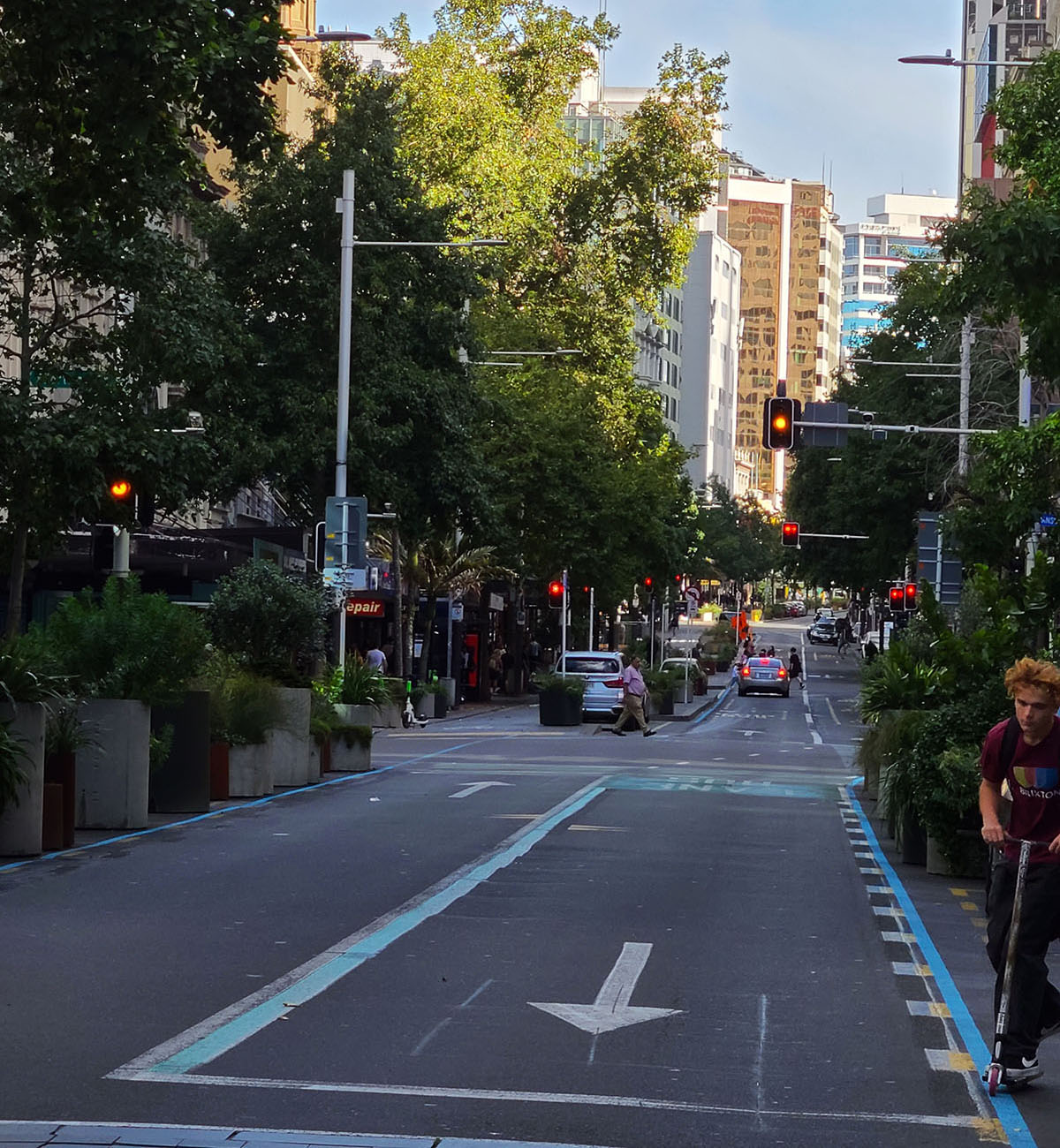
Downtown Auckland boasts some impressive buildings: The Guardian building, The Station, and the Auckland Ferry building – its historic design juxtaposed with a backdrop of graceful glass and steel skyscrapers.
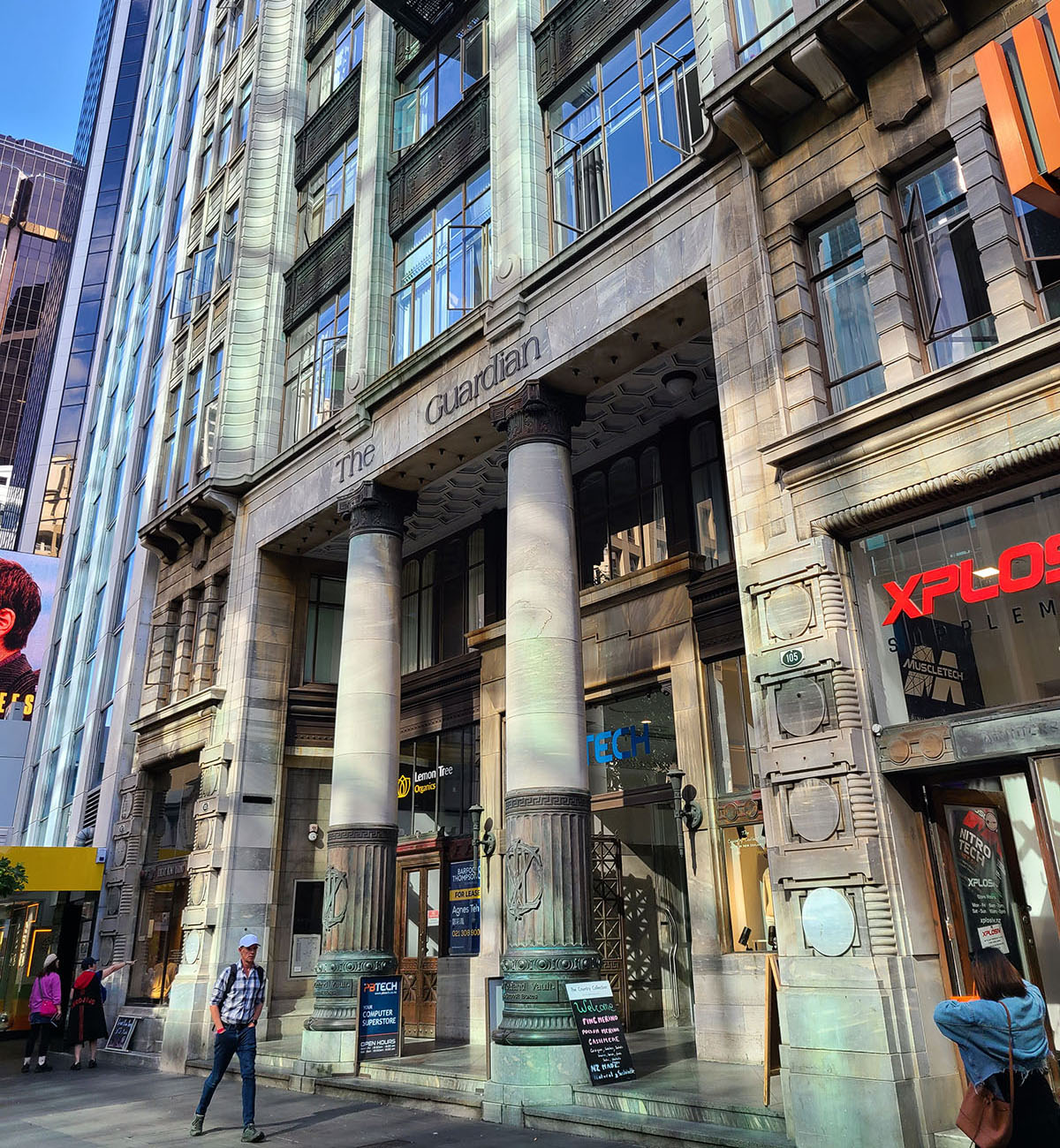 The Guardian building.
The Guardian building.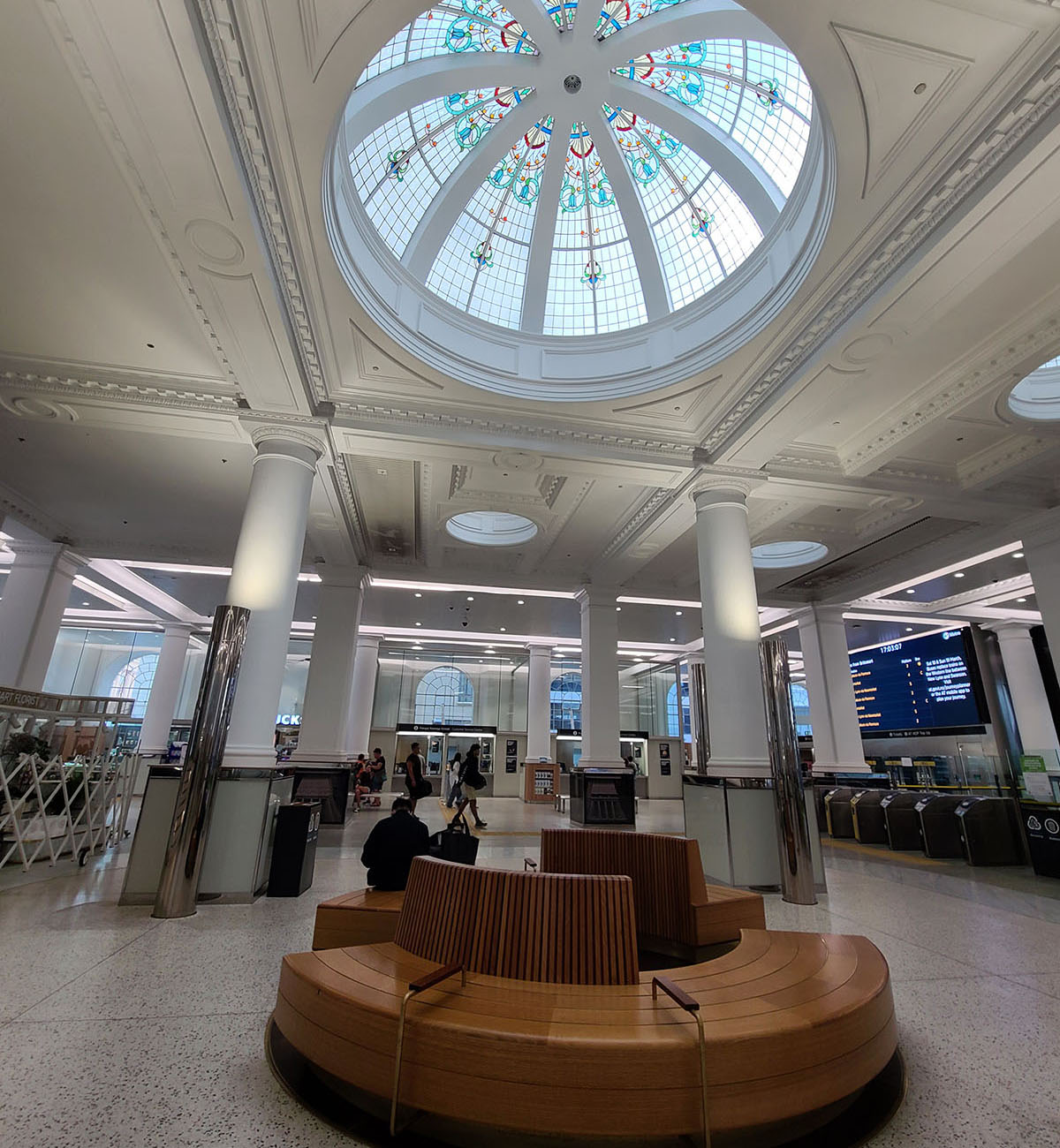 Interior of the station.
Interior of the station.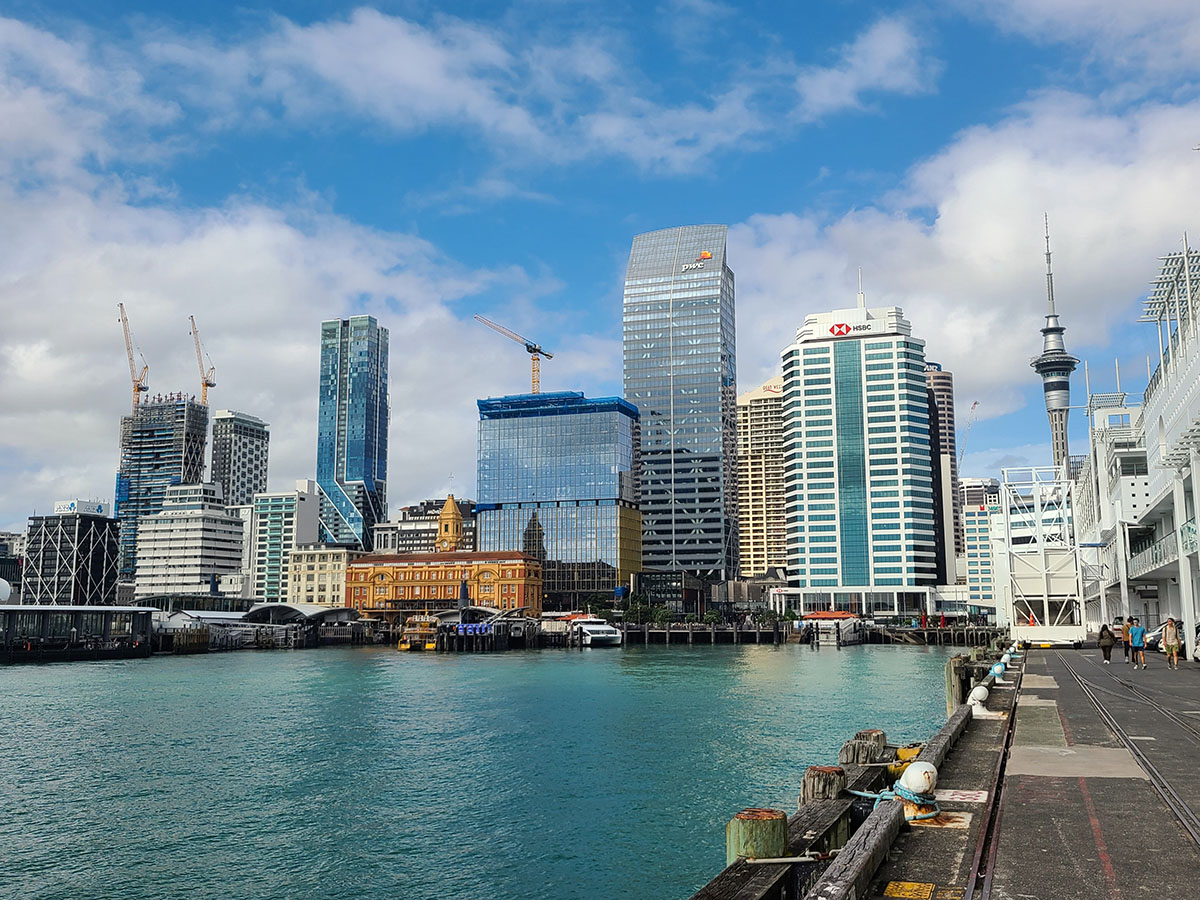
Waiheke Island is a forty-five-minute ferry ride from Auckland. It has a reputation for being one of the most beautiful places to visit in all of New Zealand. Known for its walking trails, beaches, bike trails, wineries, and its charming hub – Oneroa Village – with its beachfront cafes, restaurants, and shops.
The lines to get ferry tickets on most days, especially weekends, are daunting. It makes sense to spend at least one night on the island to enjoy the peace of the mornings and the evenings when the day-trippers return to Auckland.
Davenport Island is all of twelve minutes by ferry from Auckland. Its village has a vibrant, old-world magnetic charm. A hike to the island’s highest point is intoxicating in springtime when flowers bloom, birds and cicadas sing and click in unison, and there’s a sweet fragrance of rich soil beneath the canopy of trees and vines. The views from the hilltops of the islands, the cruise ships anchored in Auckland harbor, and skyscrapers reaching for the sky are worth the uphill trek.
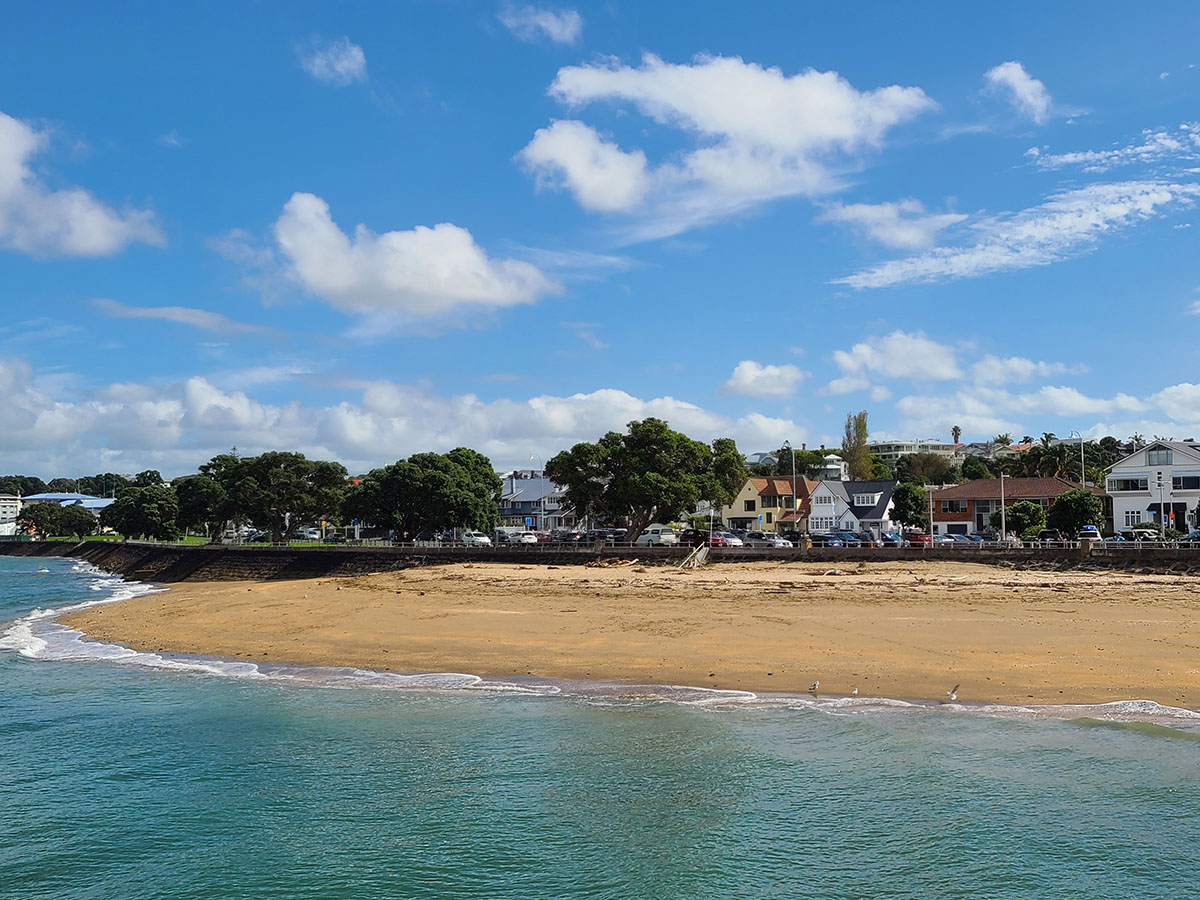 Arriving at Davenport Island.
Arriving at Davenport Island.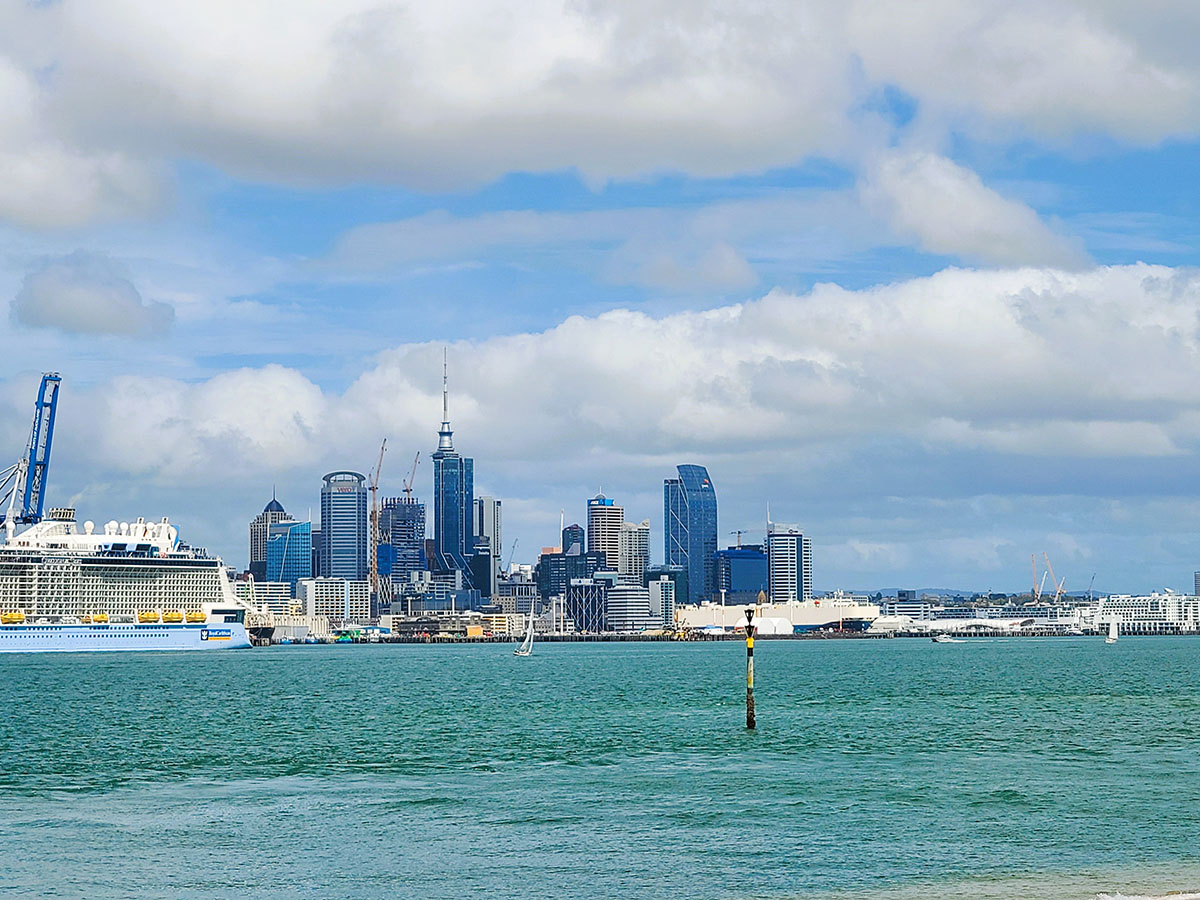 A cityscape of Auckland.
A cityscape of Auckland.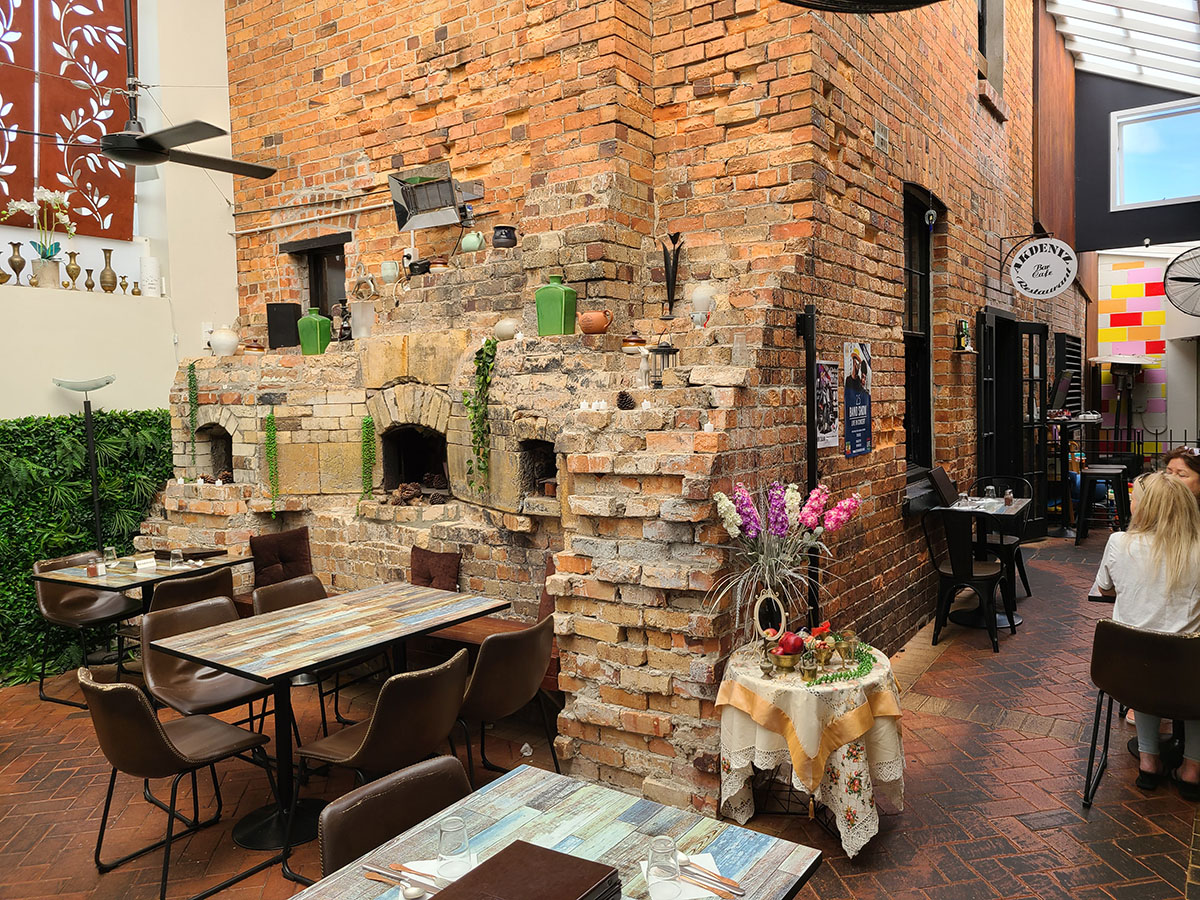 A restaurant built around the restored ruins of an old bakery on Davenport Island.
A restaurant built around the restored ruins of an old bakery on Davenport Island.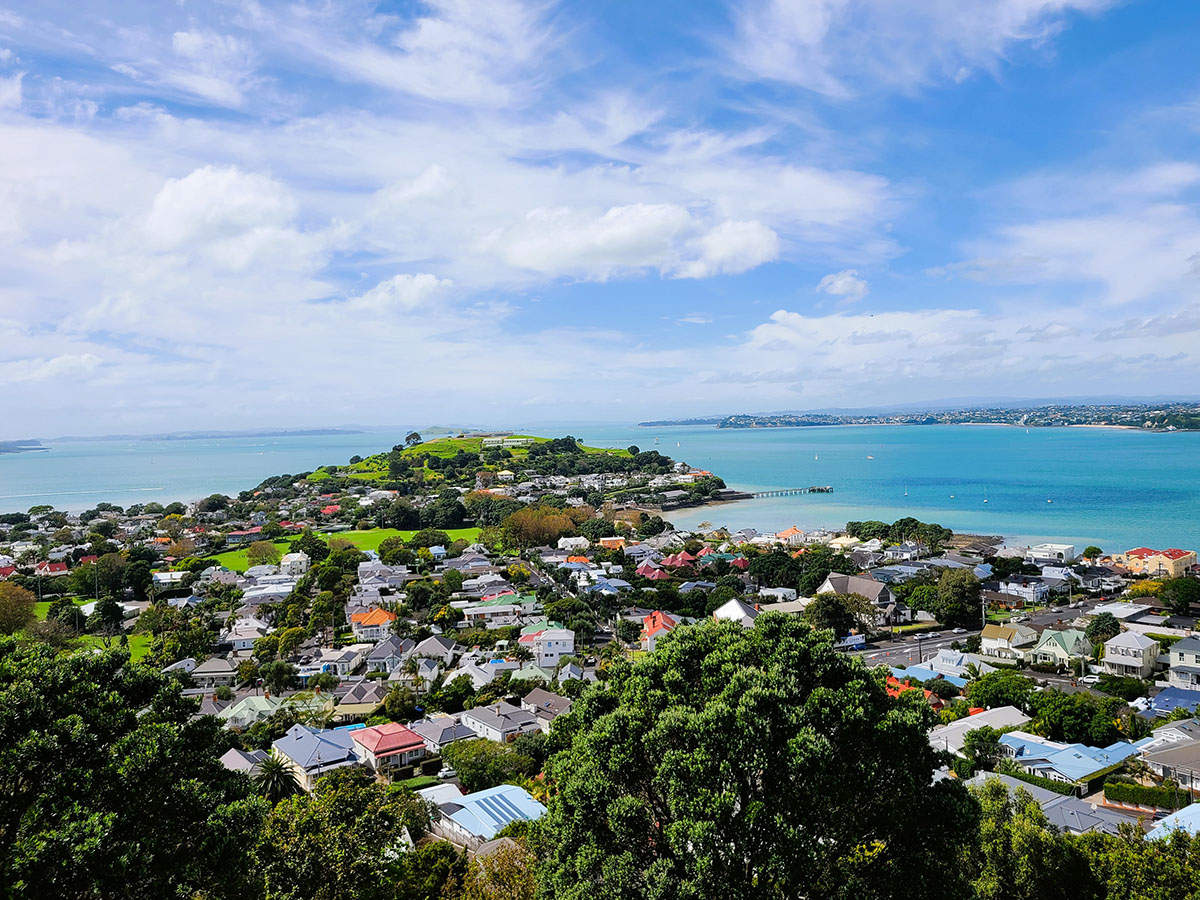 A view from the hilltop of Davenport Island.
A view from the hilltop of Davenport Island.ROTORUA
We rented a car at Auckland Airport and were on the road by 8:00 a.m., bound for Rotorua.
A stop for midmorning coffee in a small town once again brought back long-ago memories of my childhood in South Africa. The elderly waitresses welcomed all the regulars by name. No need for menus; routine orders were delivered promptly to their tables. There was good-natured banter, laughter, and animated conversations.
We sat among this friendly group in the warm spring sunshine, soaking up the atmosphere while enjoying hot flat whites and scrumptious scones with whipped cream and homemade strawberry jam.
In Rotorua, we stayed at the Silver Fern Rotorua Suites – an immaculate inn with spacious sun-filled suites equipped with kitchenettes and outdoor patios.
The village of Rotorua is rather devoid of an atmosphere but does have a wide variety of reasonably priced restaurants.
It was a ten-minute drive from the inn to TE PUIA – the Māori Valley, village, arts center, and home to the Māoris since their ancestors migrated from Polynesia between 1250 and 1300 AD.
When the British colonized New Zealand in 1840, they attempted to erase the Māori arts, language, and traditions. Speaking in their native language was sufficient to cause them to be jailed.
In 1985, legislation began to revive the Māori language. In 1987, it was declared an official language.
The original New Zealand Māori Arts and Crafts Institute was established in 1926 by Sir Apirana Ngata, the foremost Māori politician to have served in New Zealand’s parliament. In 1963, the New Zealand Arts and Crafts Act was signed, most likely when New Zealand acknowledged that the Māori culture was a profitable source of revenue that attracted a steady stream of tourists.
Today, Te Puia wood, stone, bone carving, and weaving schools continue to promote Māori art and culture by providing grants to those Māoris interested in studying their traditional crafts, performing arts, and tour guiding.
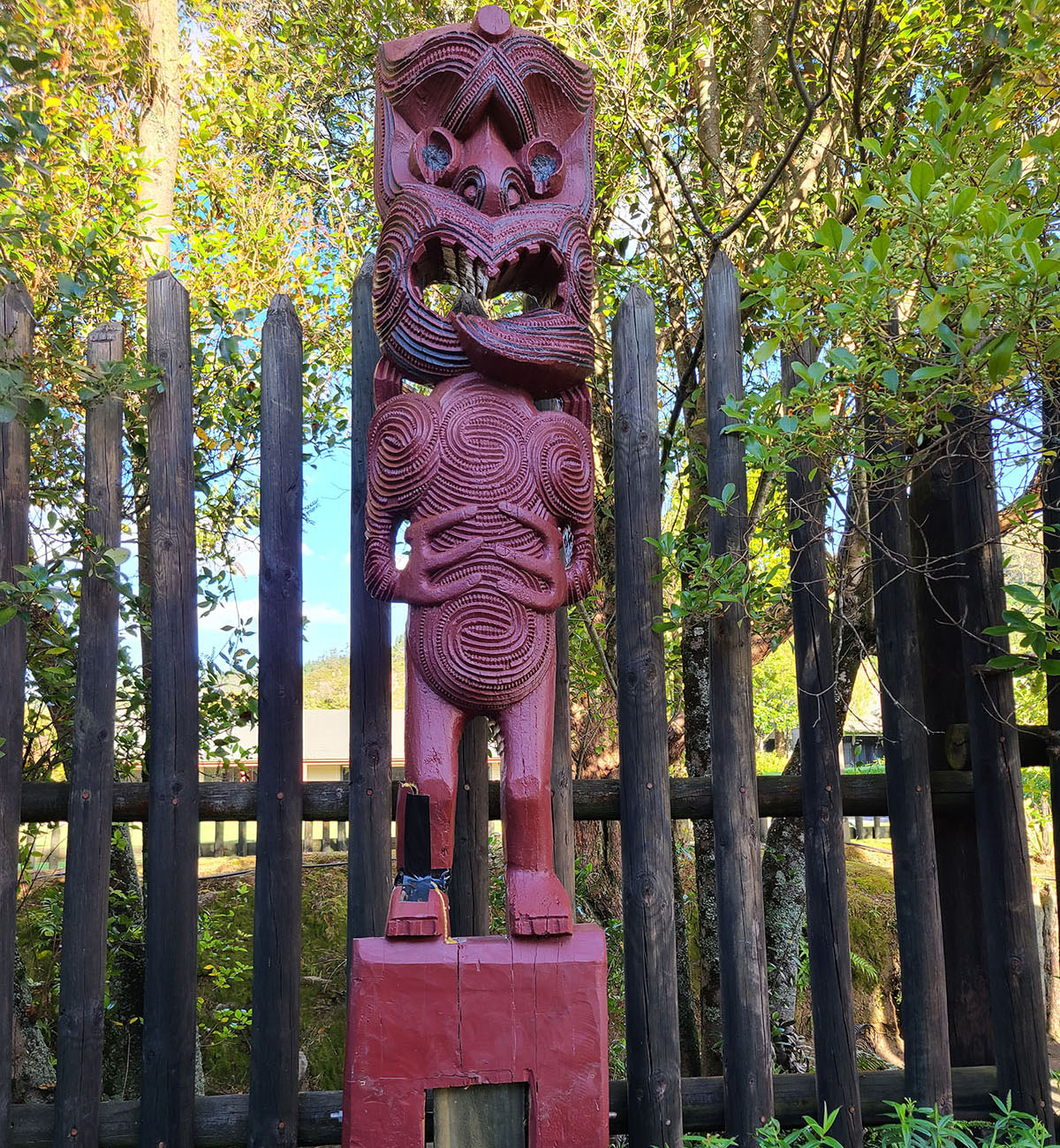
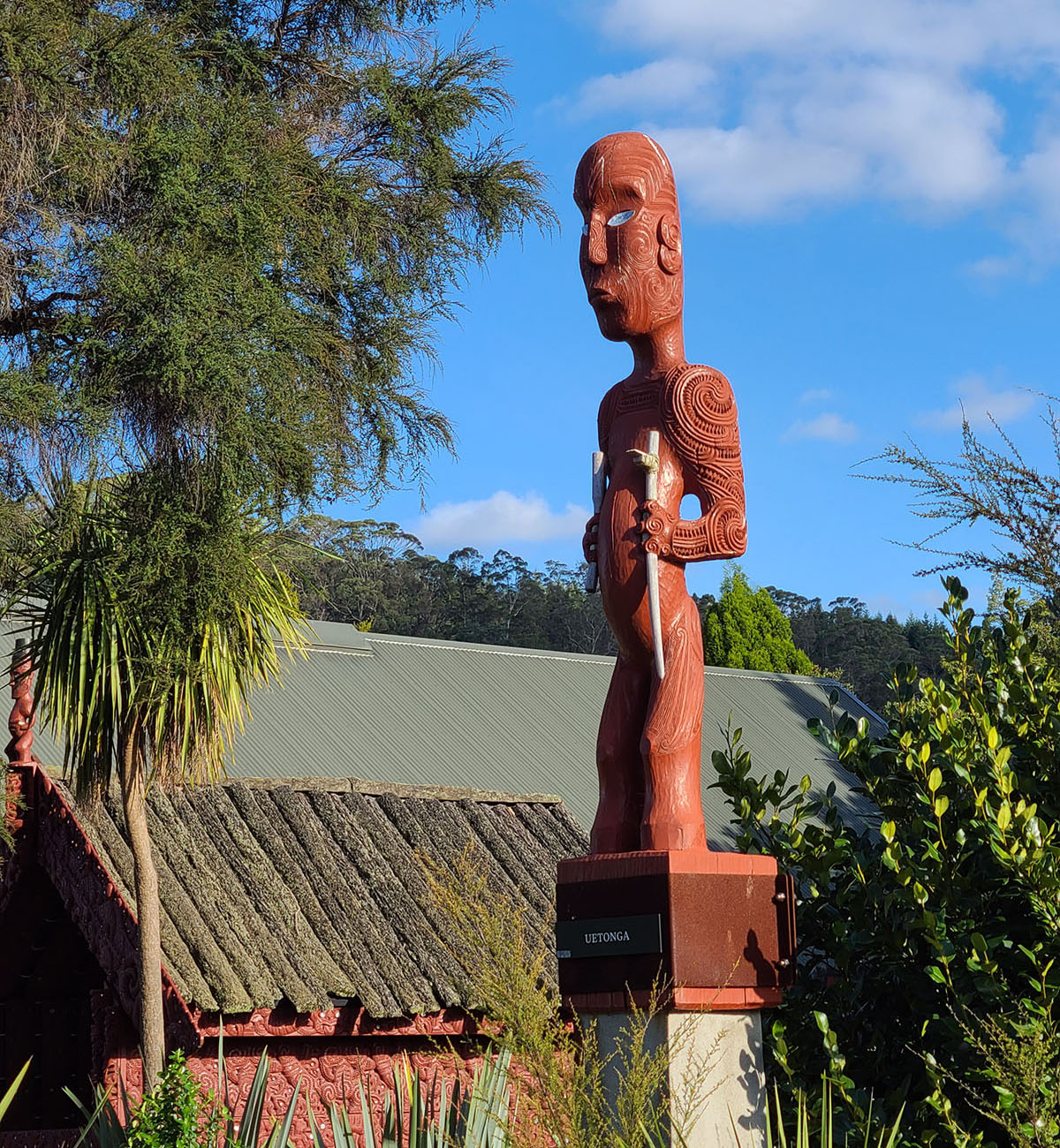
Our tour began with a visit to the Art and Craft Center where we watched artists at work carving and weaving.
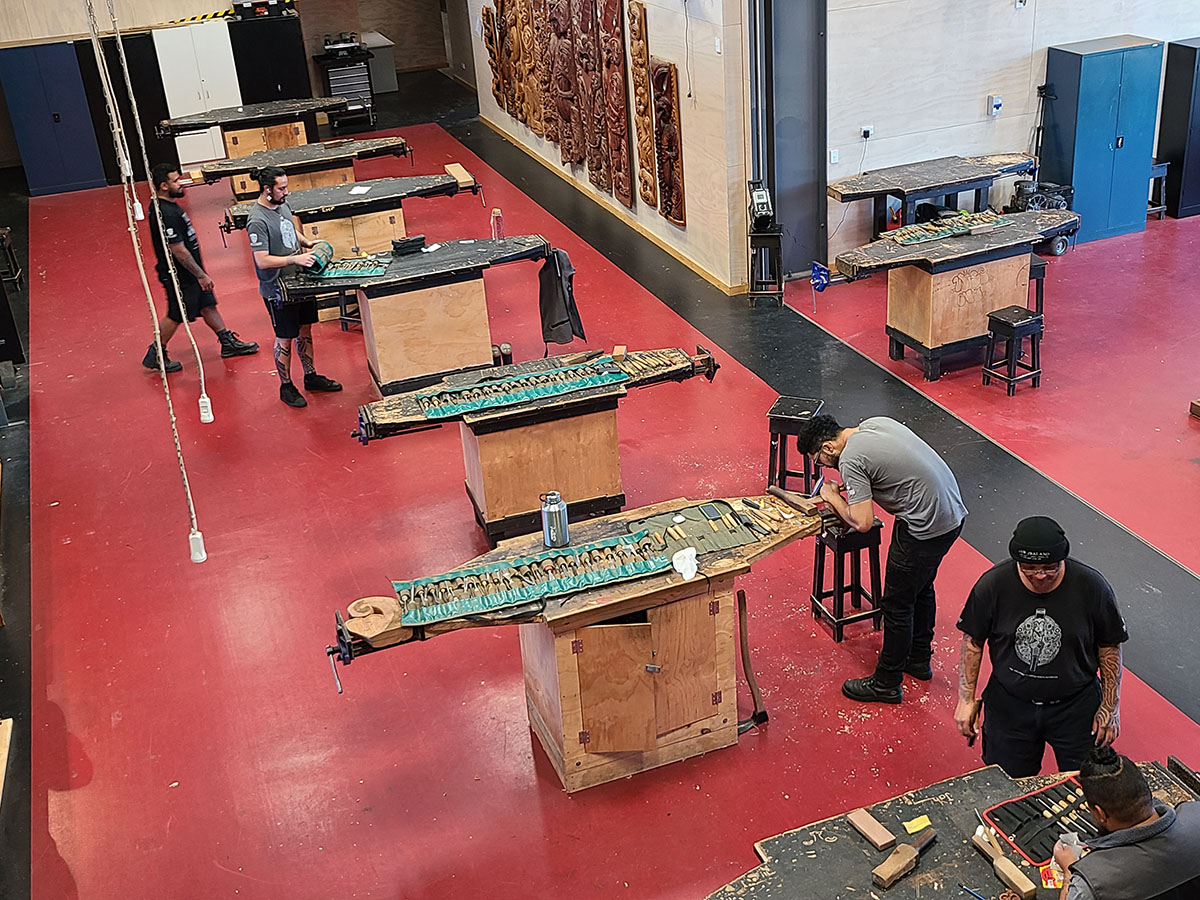
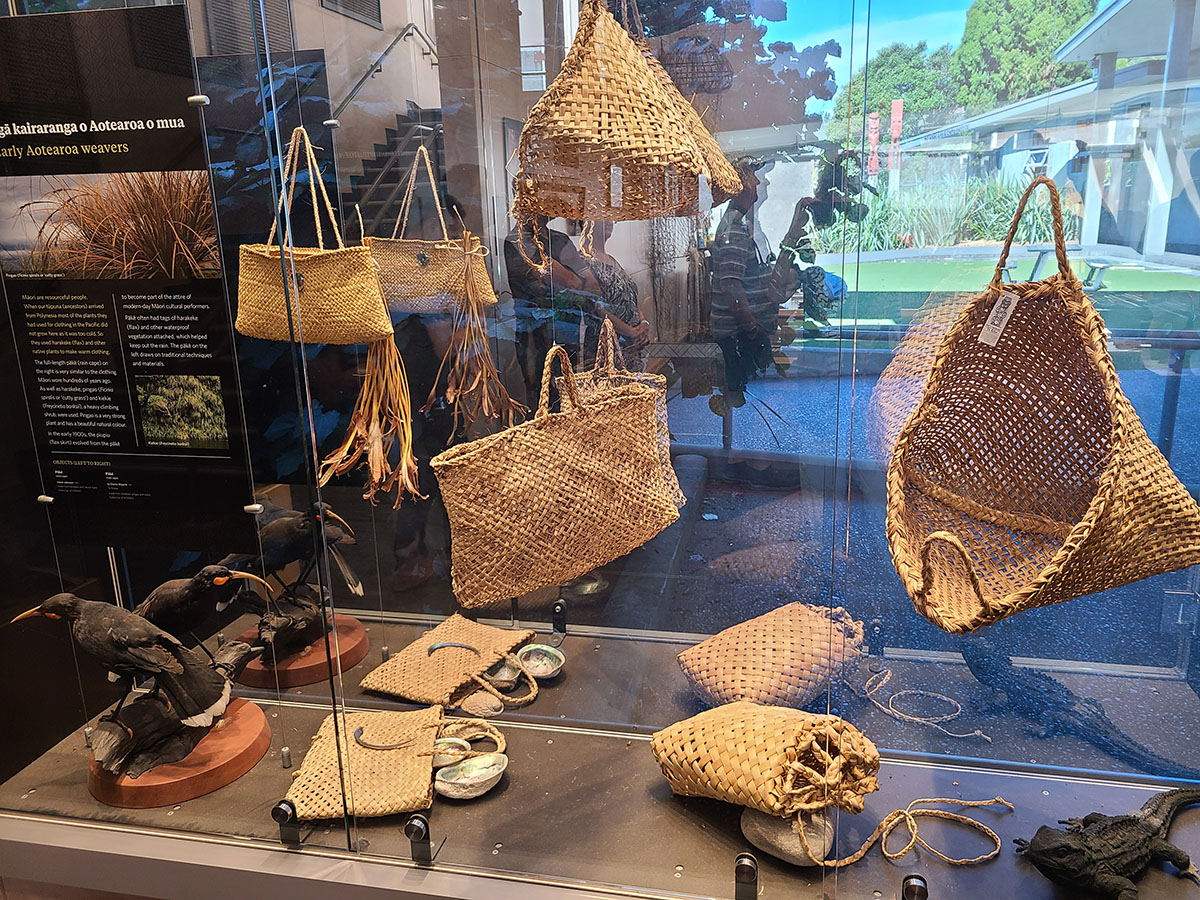
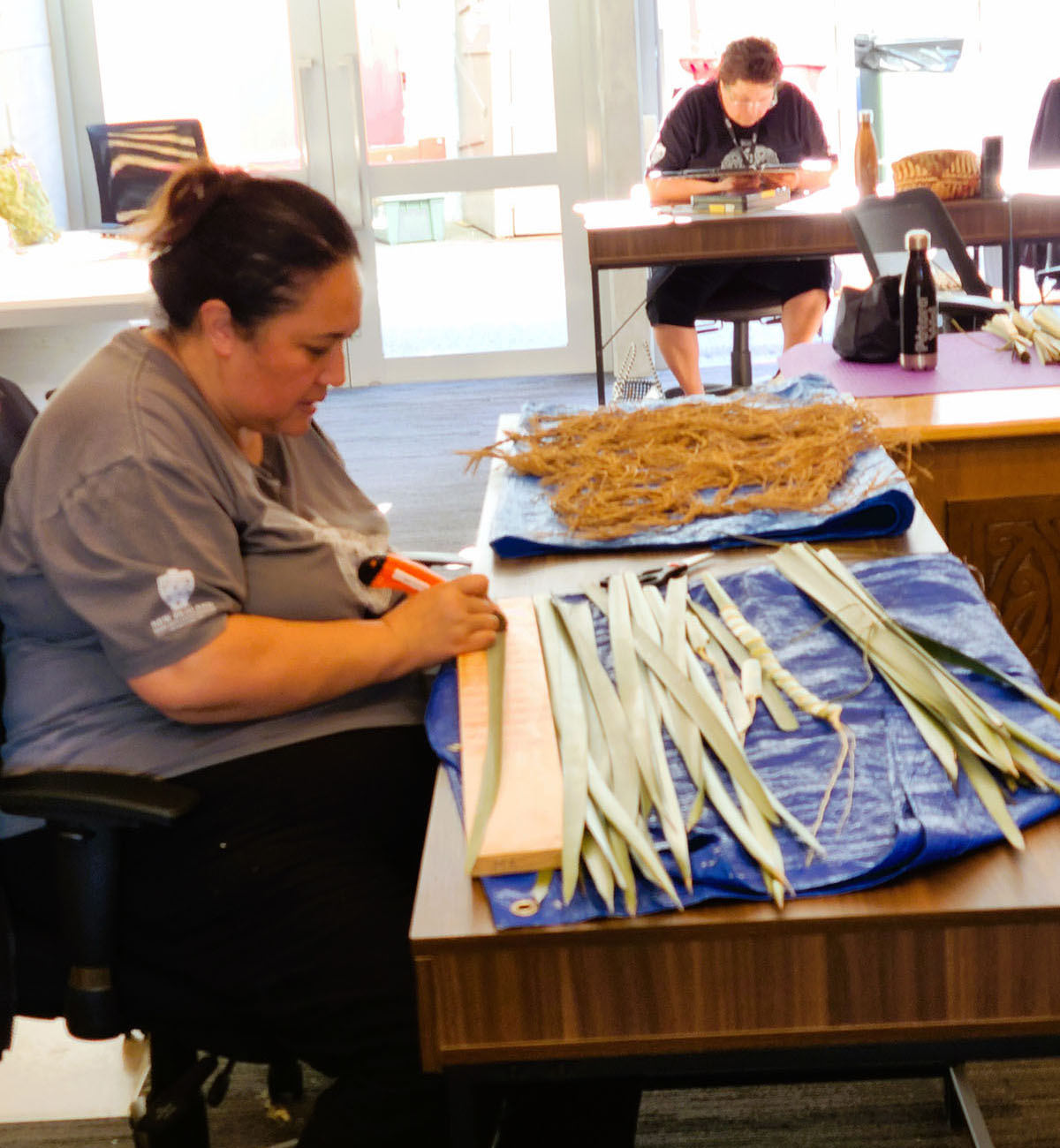
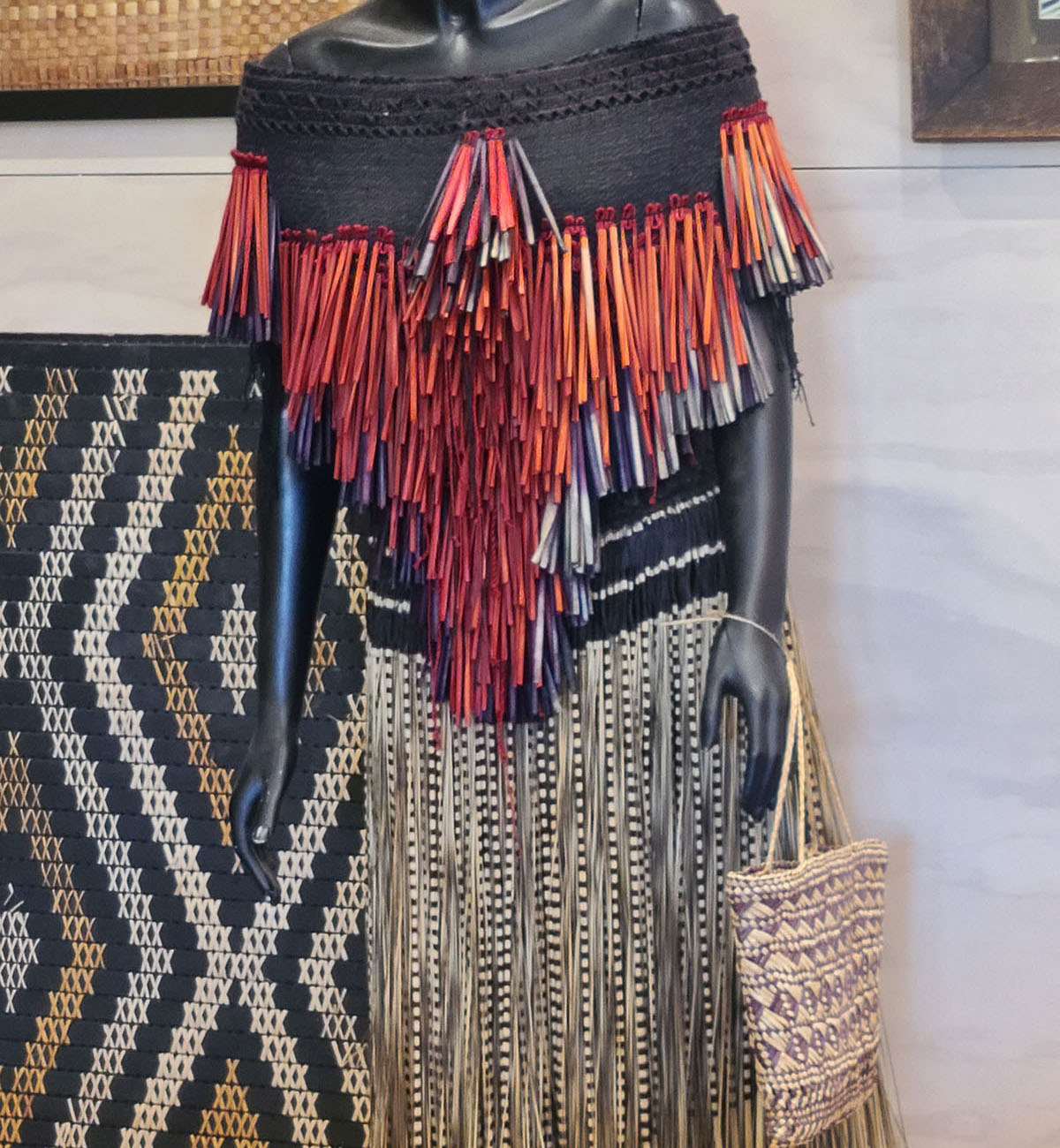
From there, we hiked down to the Kiwi Bird Preservation area, where Kiwi birds threatened with extinction are bred and reintroduced into the wild. The hike continues along a winding trail that descends into the Whaka Valley, where steam rises from the geothermal park, mud pools bubble and boil, and geysers hiss and gurgle before shooting into the sky.
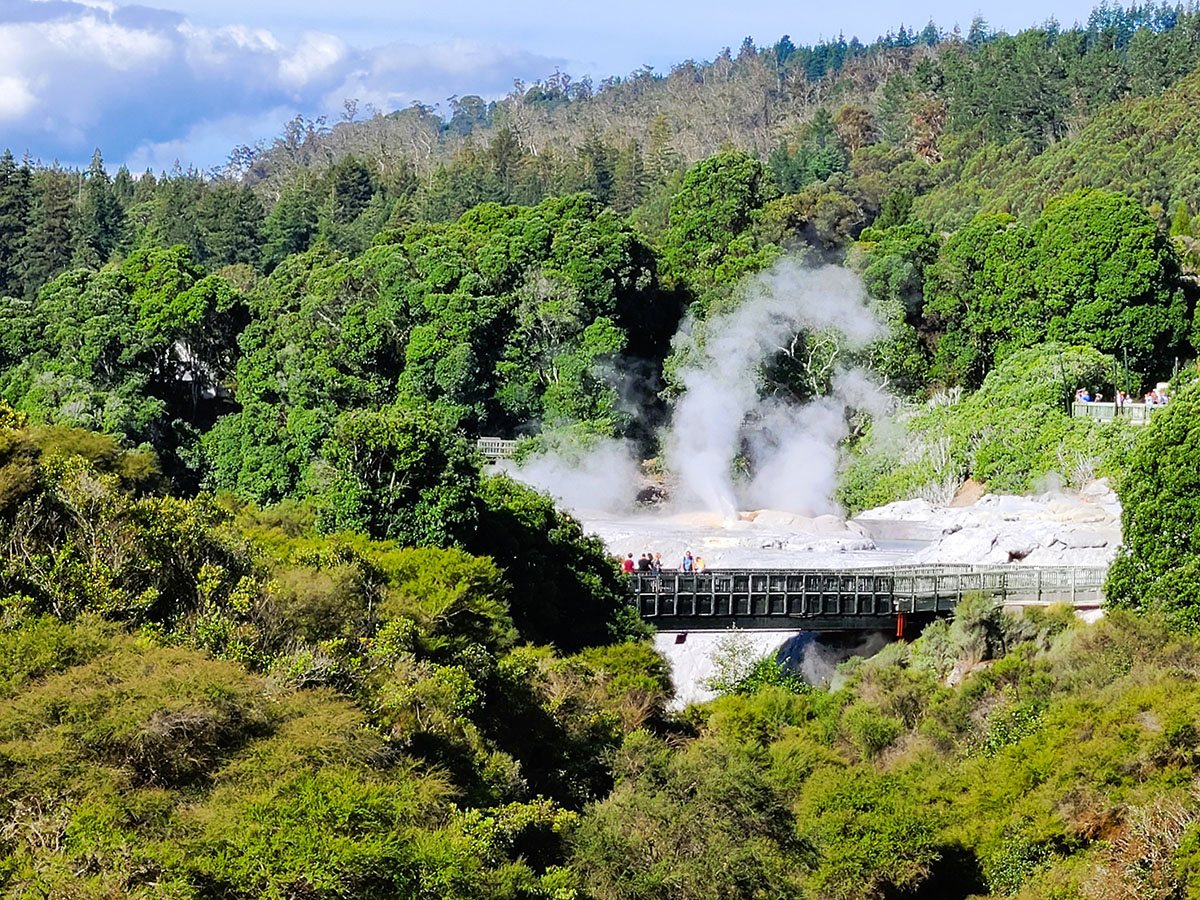
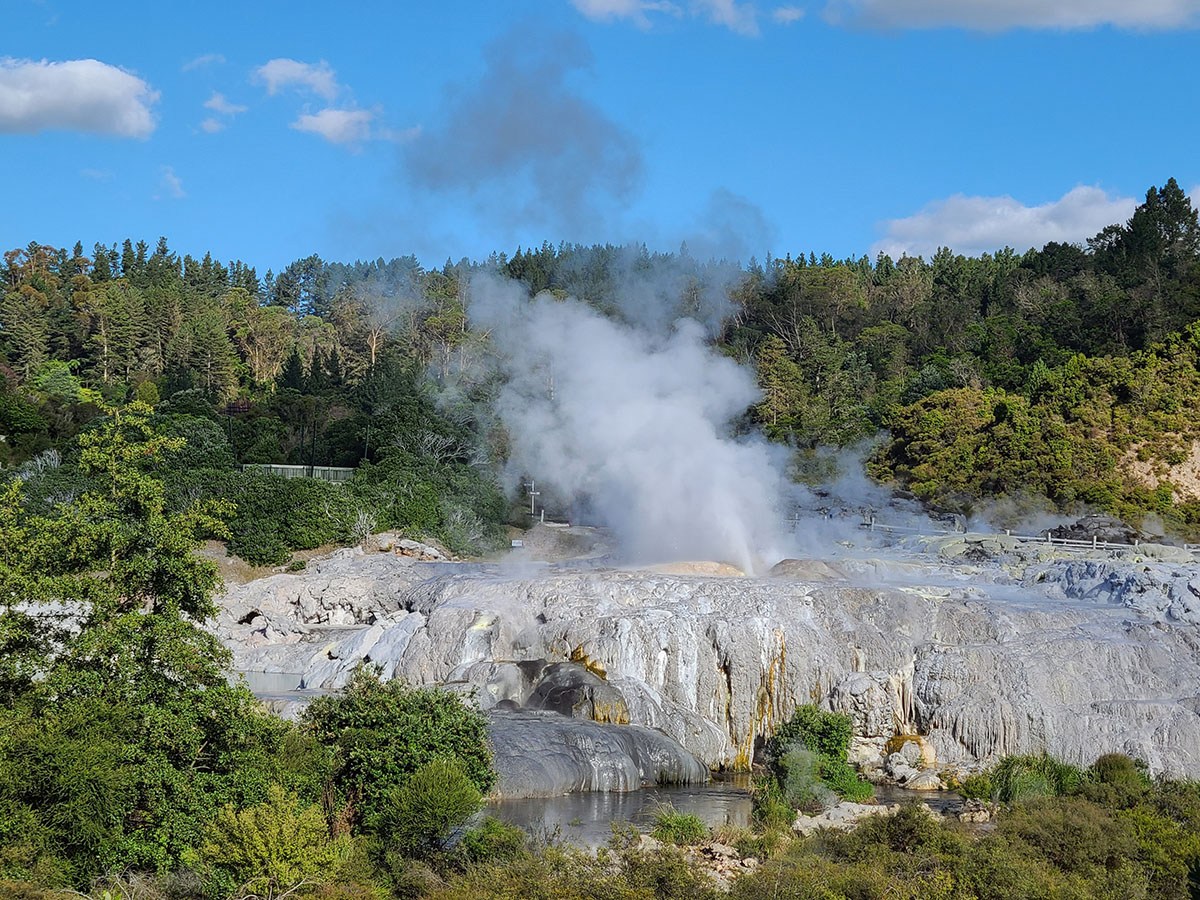
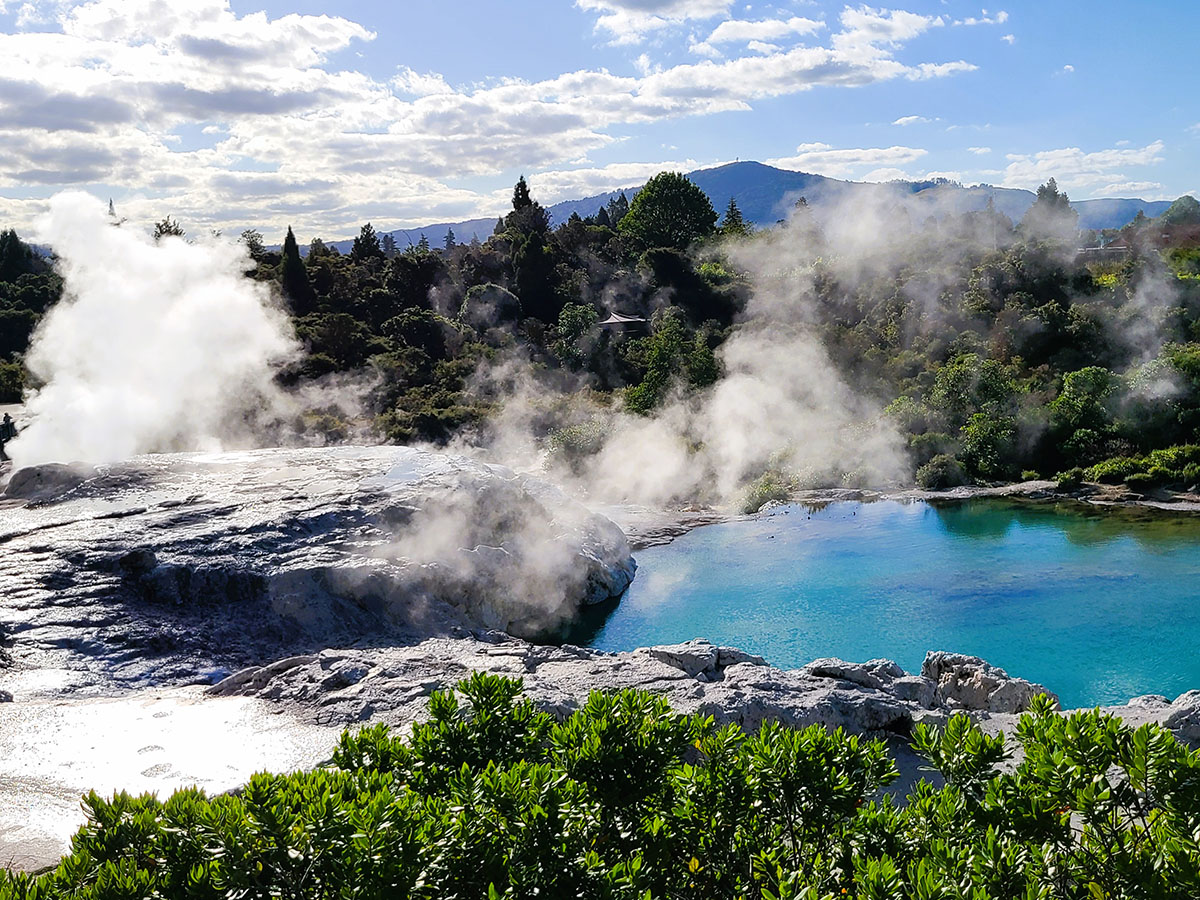
As the day wanes, visitors are treated to a gourmet dinner in the Pātaka Kai glass-enclosed restaurant, where melt-in-the-mouth, slowly cooked dishes are prepared in “hangi” – underground steam ovens.
Dinner is followed by the unforgettable, mesmerizing Haka performance, held in the exquisitely carved Te Aronui a Rua meeting house. Haka are the ceremonial dances of the Māori culture most commonly performed to welcome guests, acknowledge achievements, and celebrate important events or funerals.
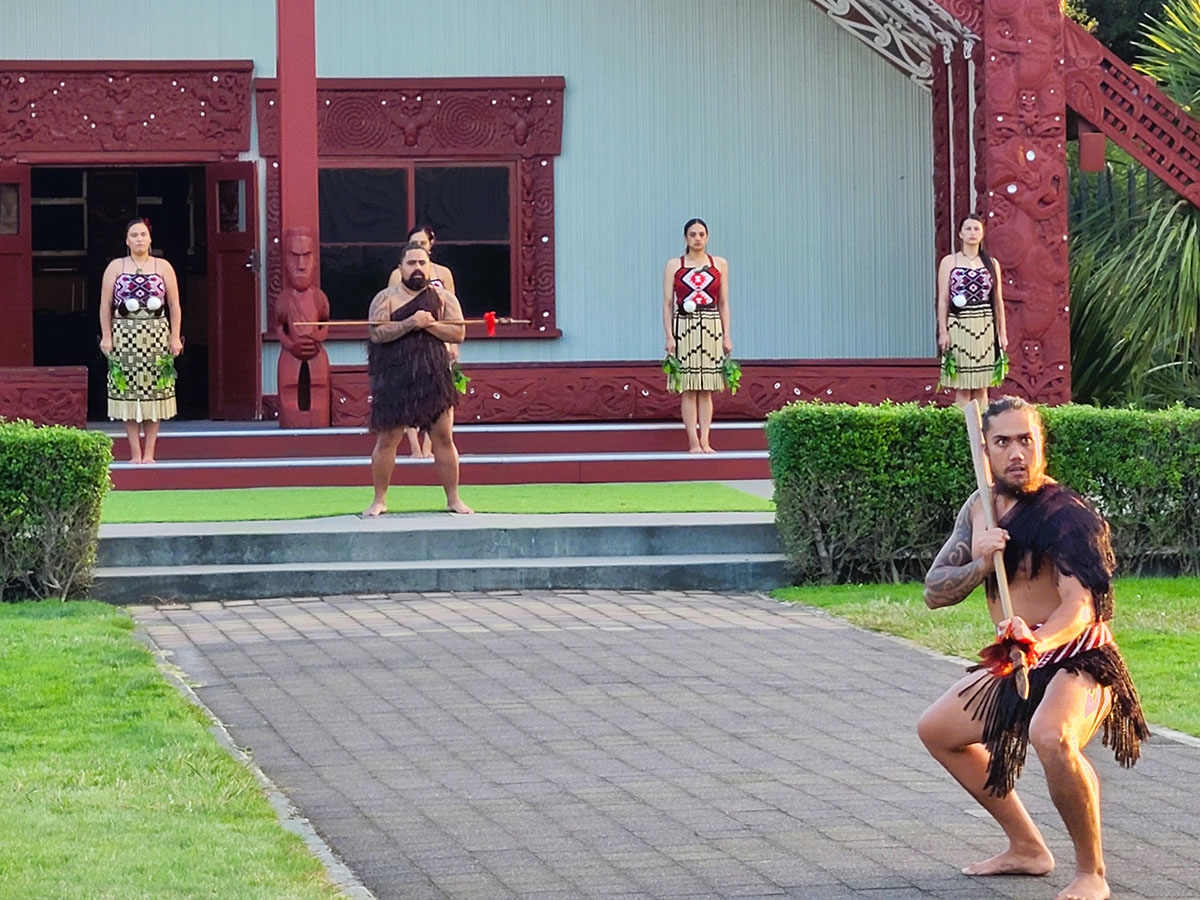
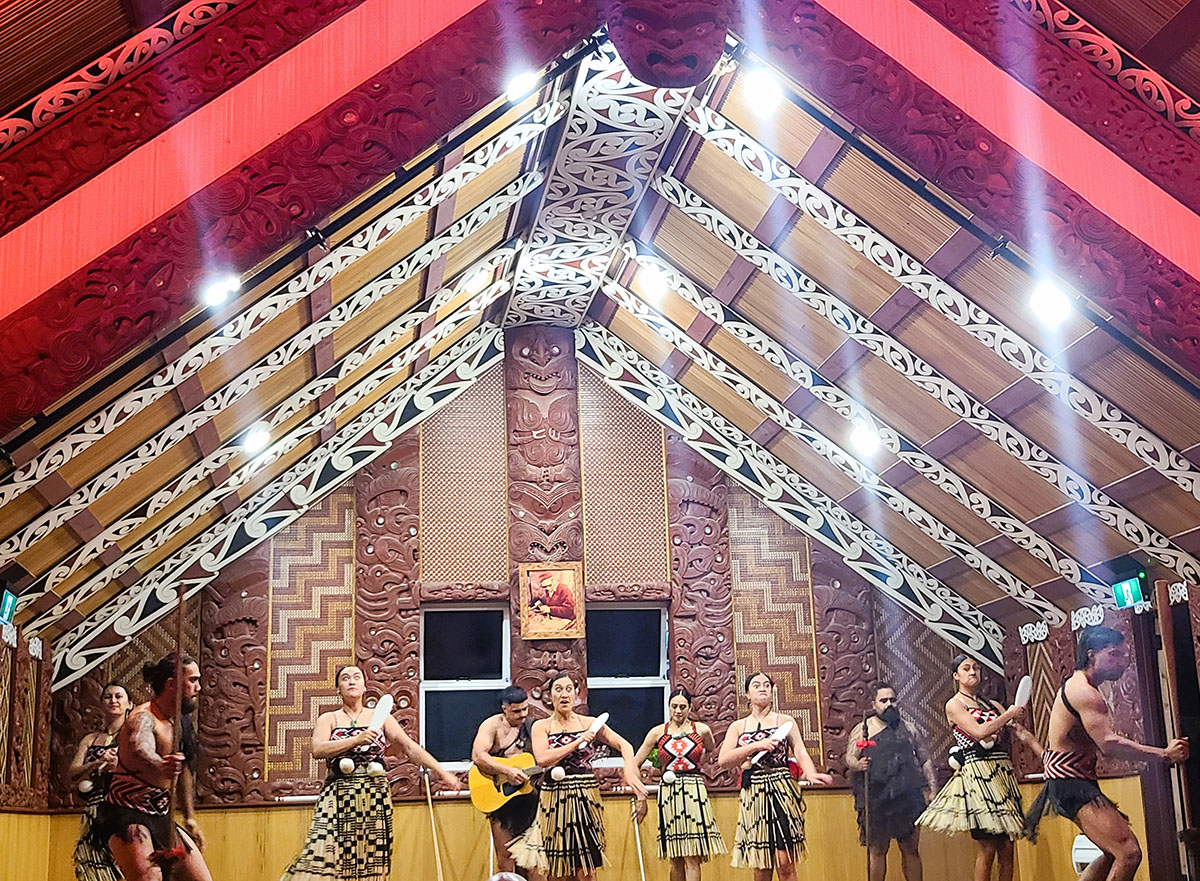
Our visit ended with another highlight. We donned our warm jackets and hiked down to the geysers, now illuminated with night lights. Mugs of hot chocolate were handed out while we chatted, watched, and waited for the famous Pōhutu geyser to erupt. At 9:00 p.m., just as we were about to give up hope, the geyser began hissing and boiling, then with a huge
whoosh, shot ninety feet into the illuminated night sky.
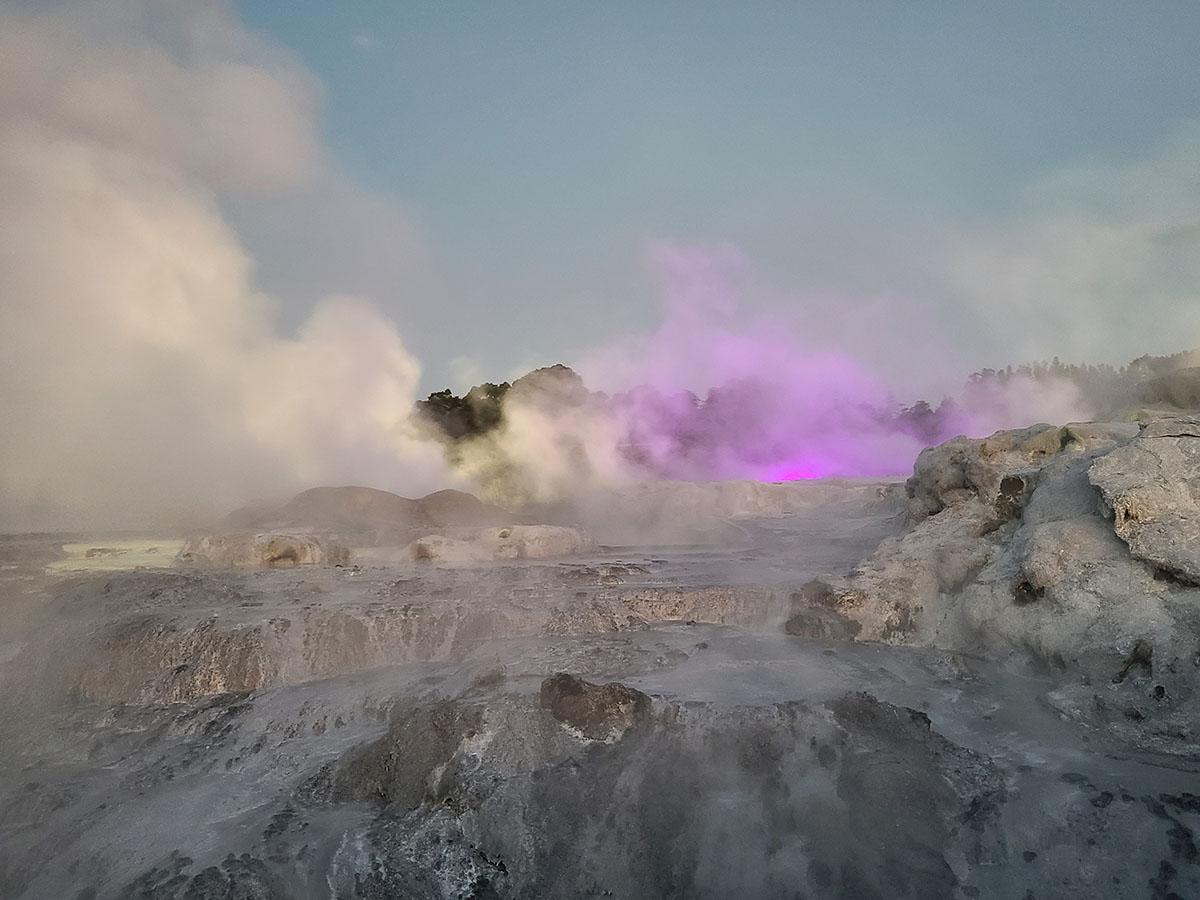
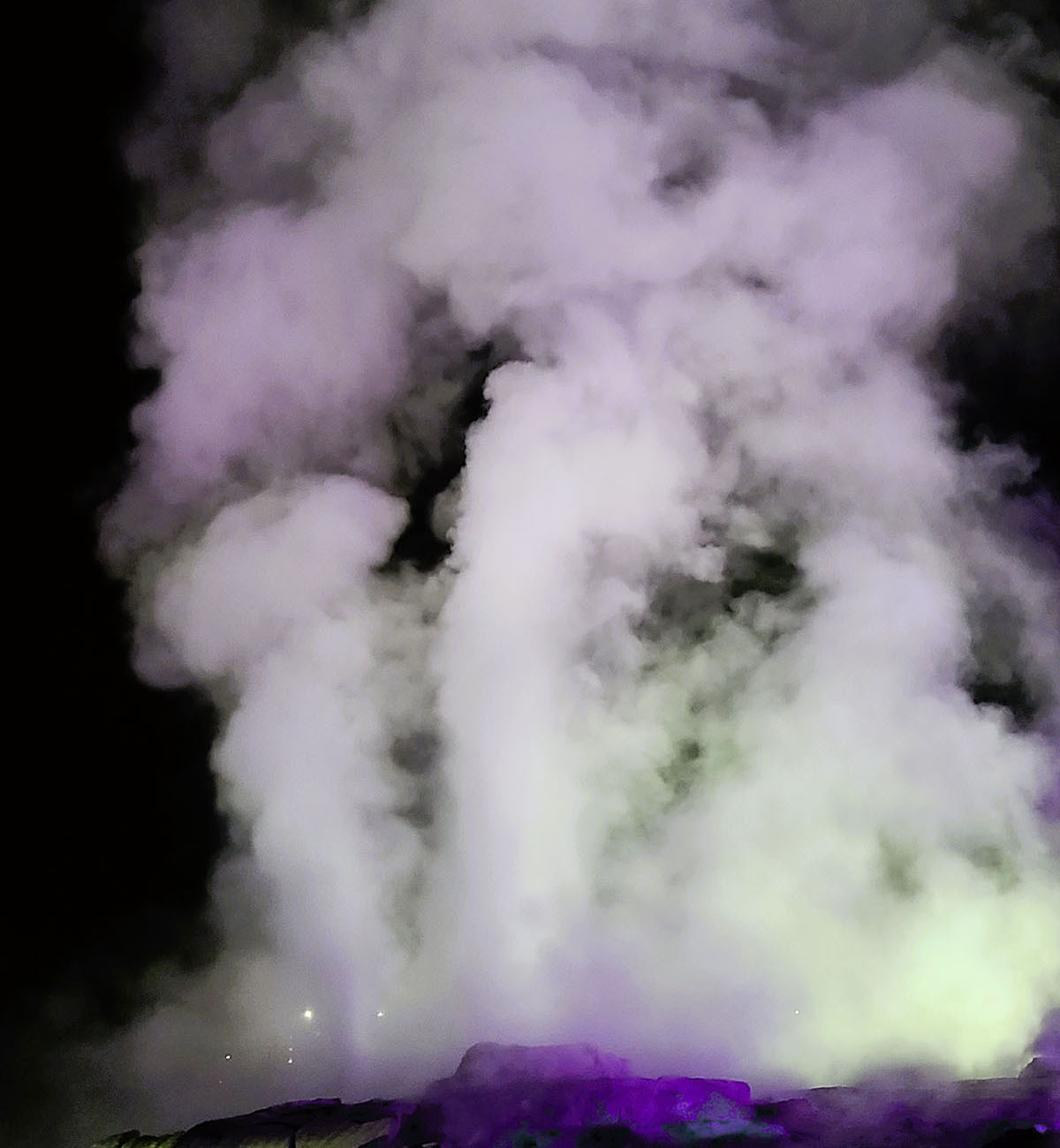
* When in New Zealand, don’t miss a visit to Te Puia. Go online and book well in advance.
Rotorua – The Redwood Forest Tree Walk
Immerse yourself in nature, walking the seven hundred meters of swaying bridges and platforms beneath a canopy of giant redwood trees, some of which are over one hundred and twenty years old. The forest floor is shaded by thousands of umbrella tree ferns that thrive in the moist, sheltered environment. If one has time, I would suggest going during the day and again at night when all the hanging lanterns create a fairytale, otherworldly atmosphere. The walk only takes an hour at a leisurely pace.
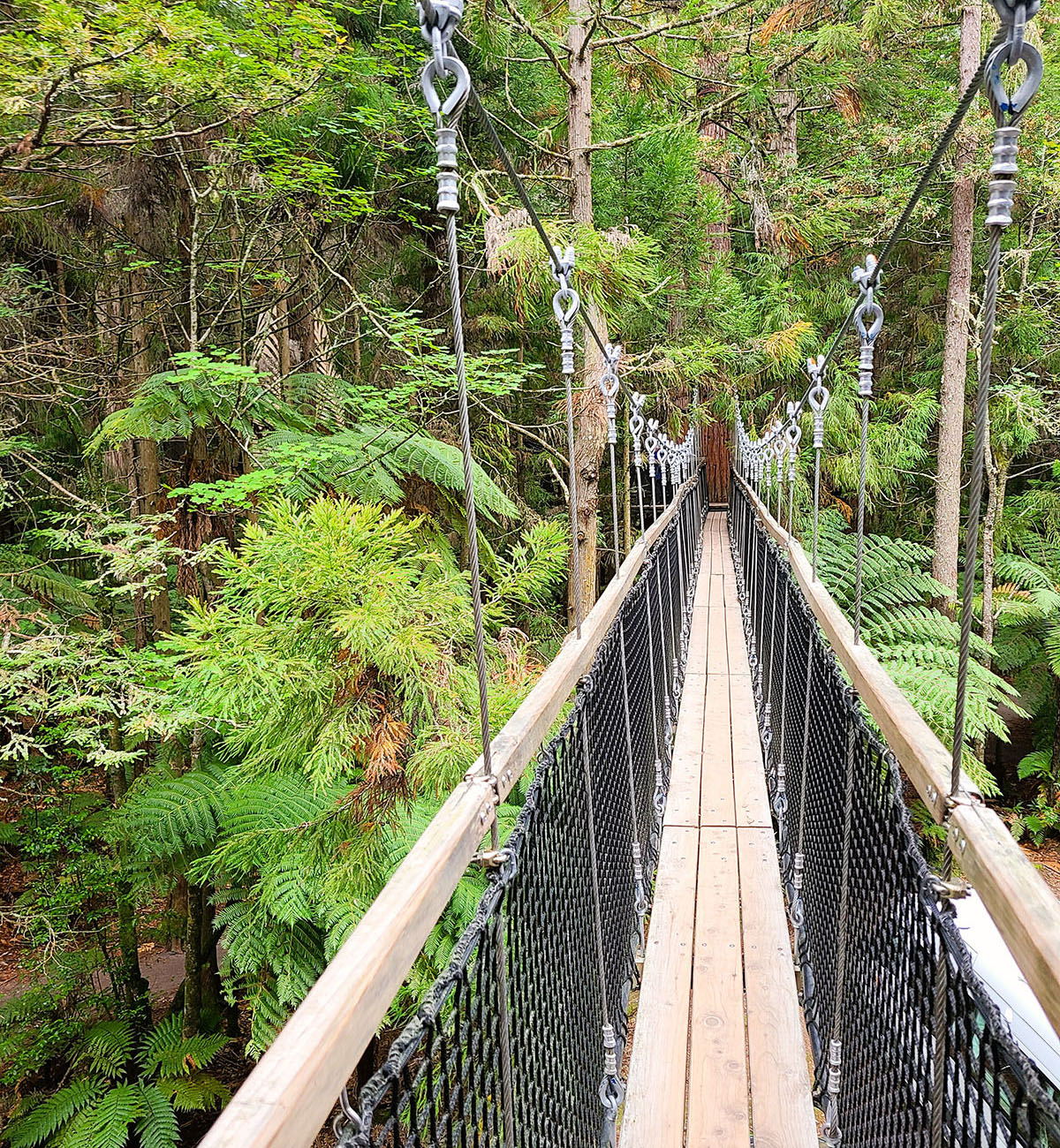
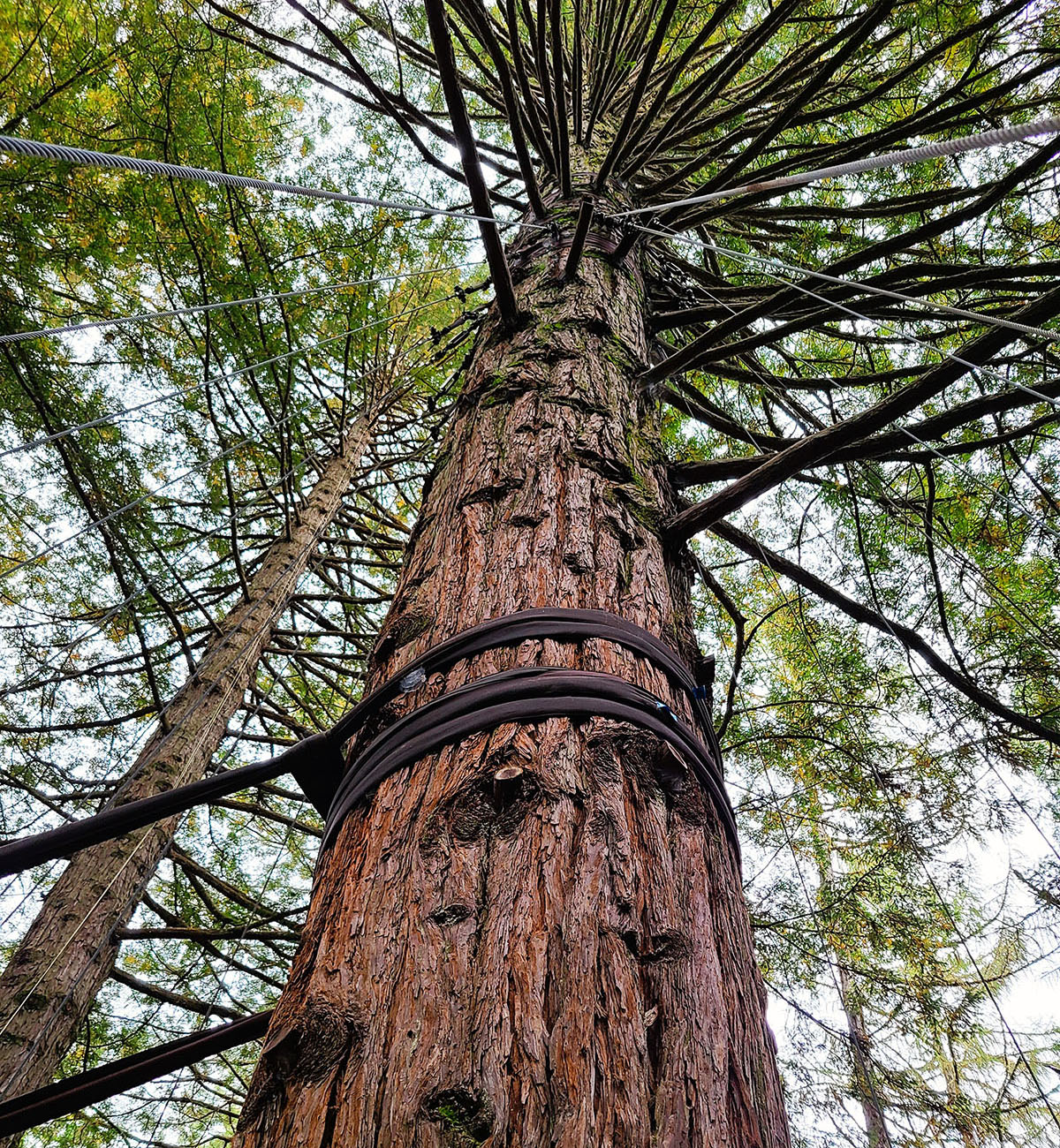
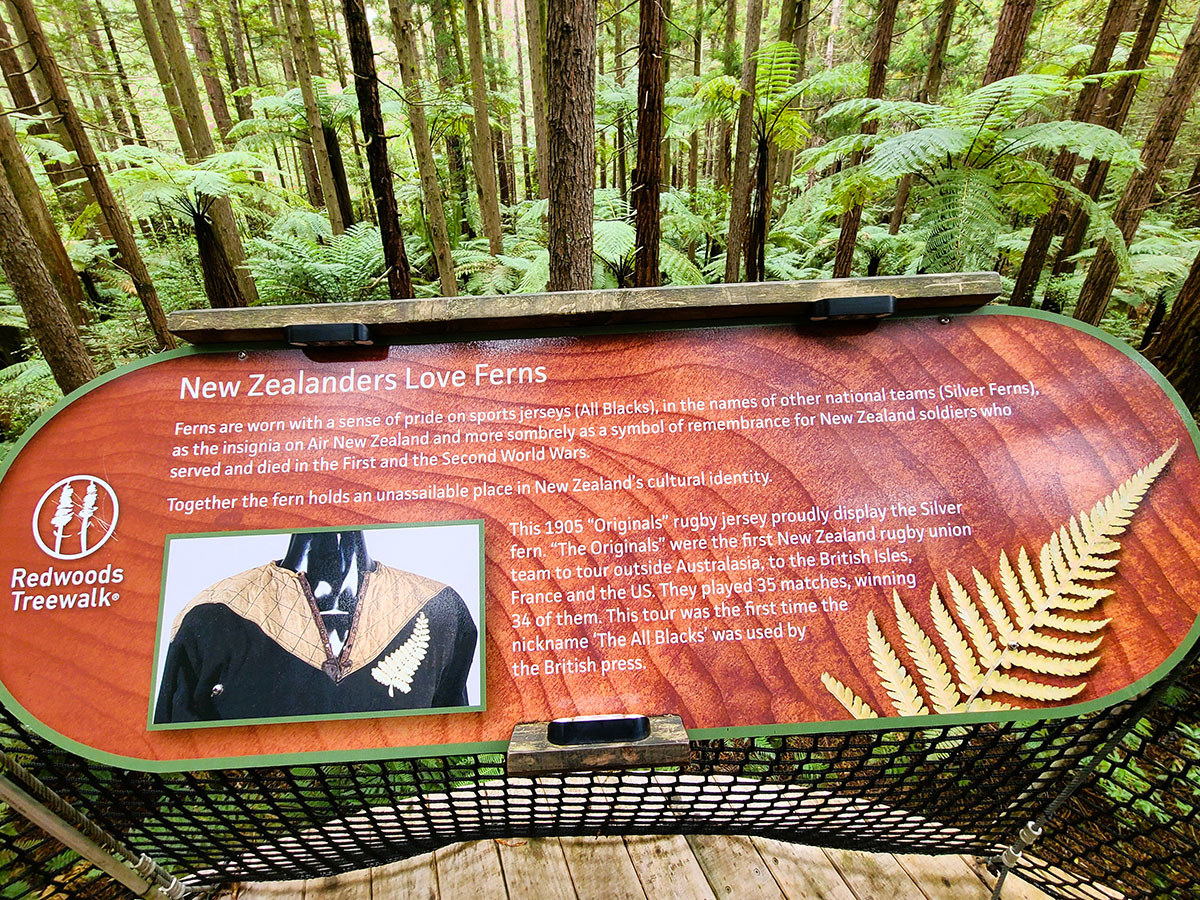
Rotarua Waimangu Volcanic Valley lies in the shadows of the Tarawera mountain – a dormant volcano that has erupted five times in the past eighteen thousand years. The most recent eruption on June 10th, 1886, created a chain of craters from the northern end of Tarawera to the Waimangu Valley, devastating the entire area. The vegetation one sees today is all thanks to nature’s plant recolonization. One can get a map at the Visitor’s Center and hike to Lake Rotomahana, where you may want to take a boat cruise. The hike from one end to the other takes approximately two hours, depending on how many stops one makes along the way.
There are three Bus Stops along the trail where buses stop to ferry tired hikers back to the Visitor’s Center.
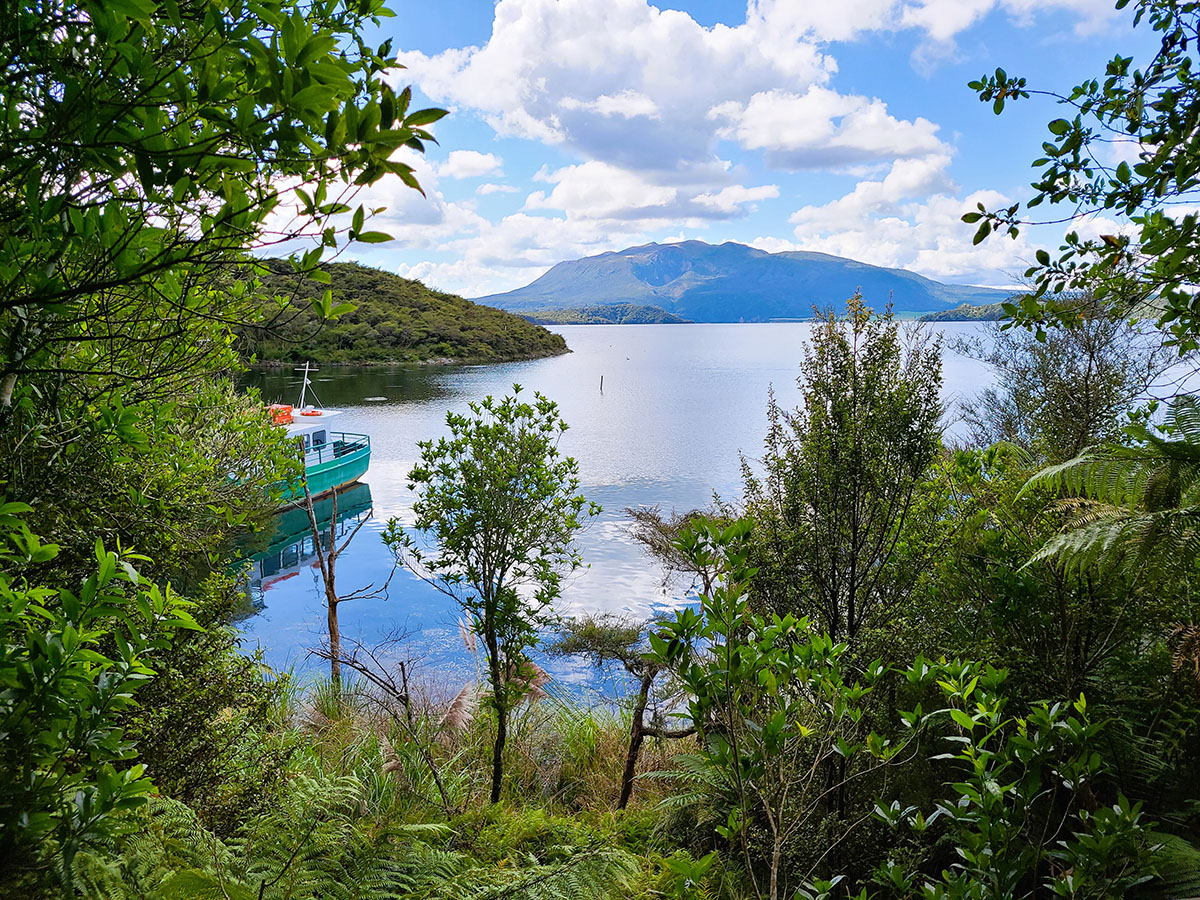 Lake Rotomahana.
Lake Rotomahana.The hiking path winds through a dense forest where a myriad of species of ferns – from those that form a forest canopy to the tiniest variety that populate the forest floor, grow and flourish. In the distance, clouds of steam from Echo Crater and Frying Pan Lake float over the landscape. The silence is broken only by the hissing of steam, the bubbling and boiling of mud pools, and chirping birds.
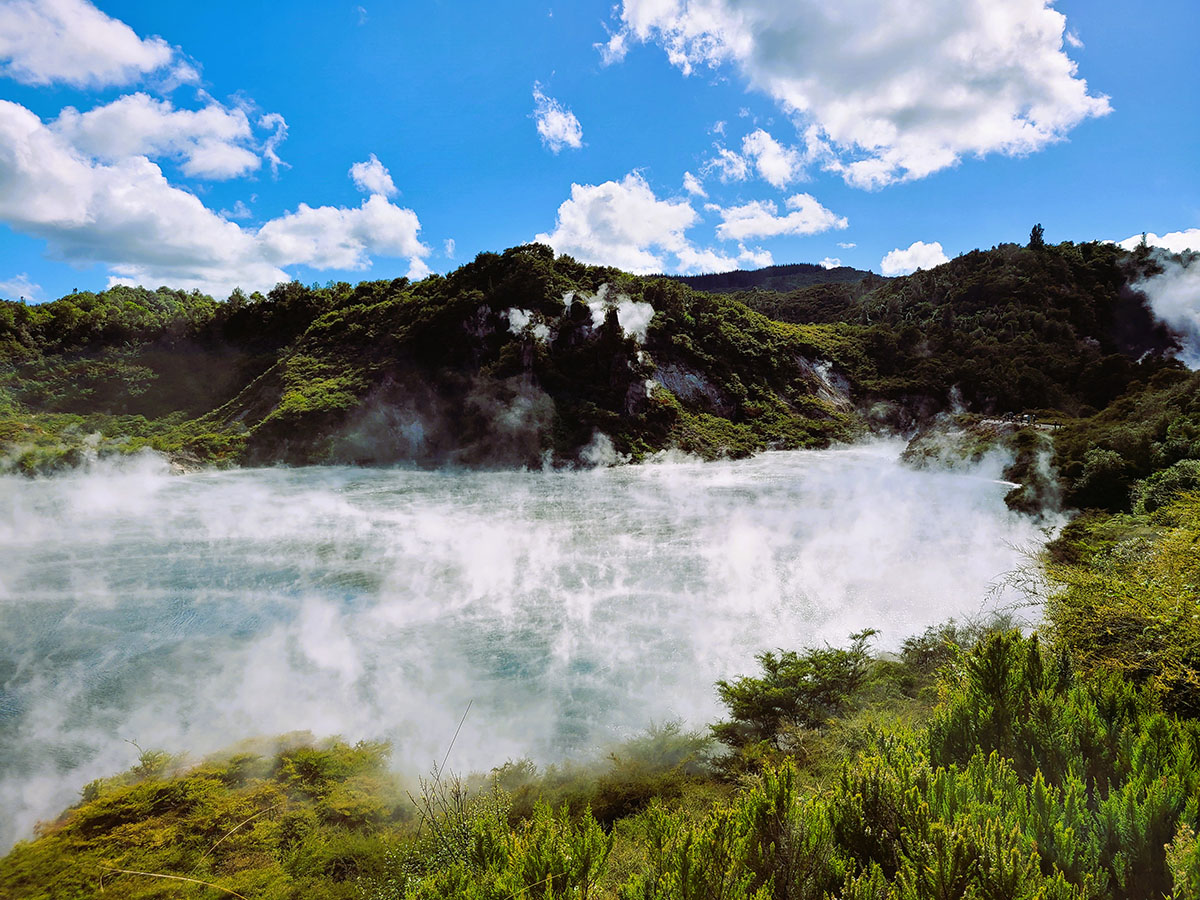 Frying Pan Lake.
Frying Pan Lake.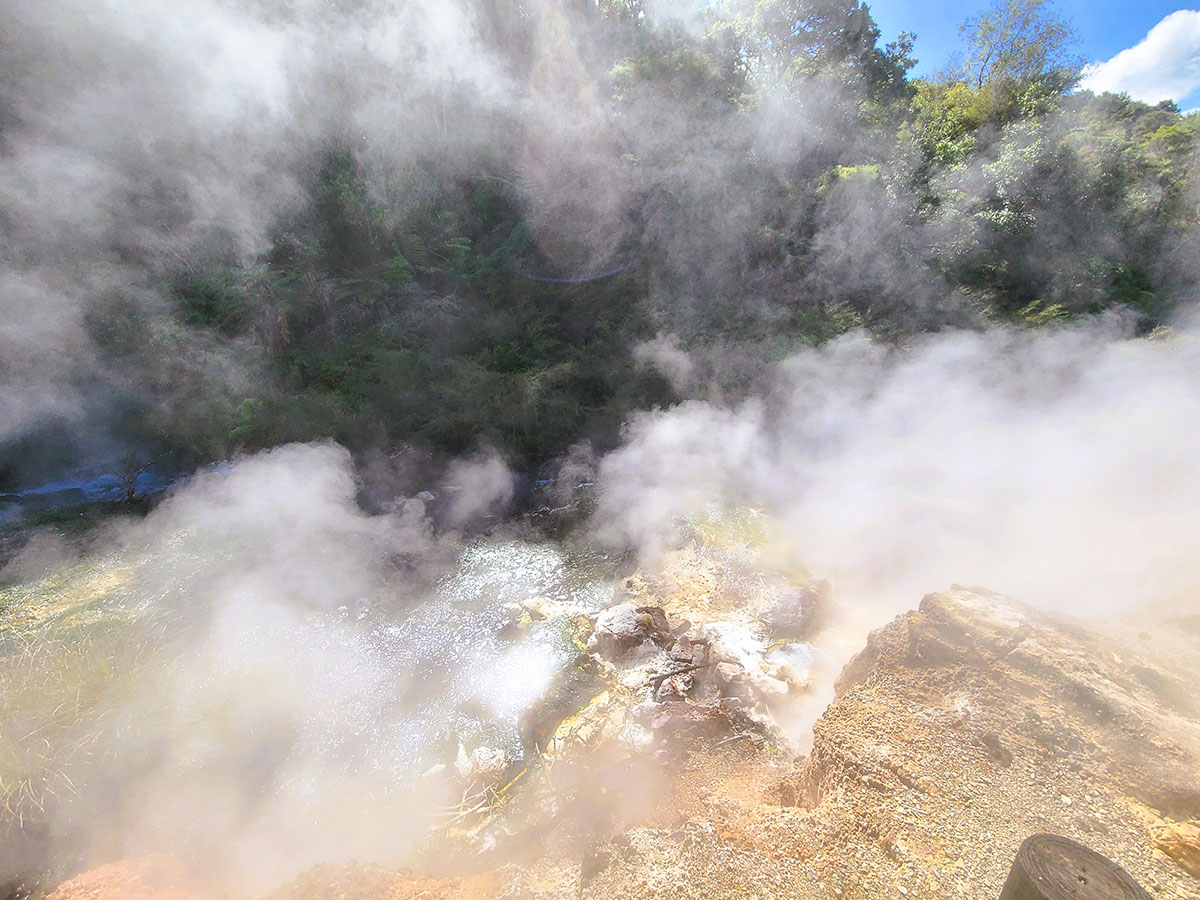 Echo Crater.
Echo Crater.Rotarua Blue Lake Walk is a five-and-a-half kilometer walk that takes approximately one-and-a-half hours. It’s popular for bird watching, so carry binoculars. Start at the park and walk clockwise. Unfortunately, it poured with rain on our last day when we had planned to hike the trail. Next time!
TAPAO
The town of TAPAO is a one-and-a-half-hour drive from Rotorua. This often-overlooked town is a gem. We stayed at the Baycrest Thermal Lodge in a suite filled with natural light with a kitchenette, a small dining area, a living room, and a patio with views of Tapuaeharuru Bay. We began our visit with a walk along Lake Terrace walkway, where we stopped for a leisurely lunch.
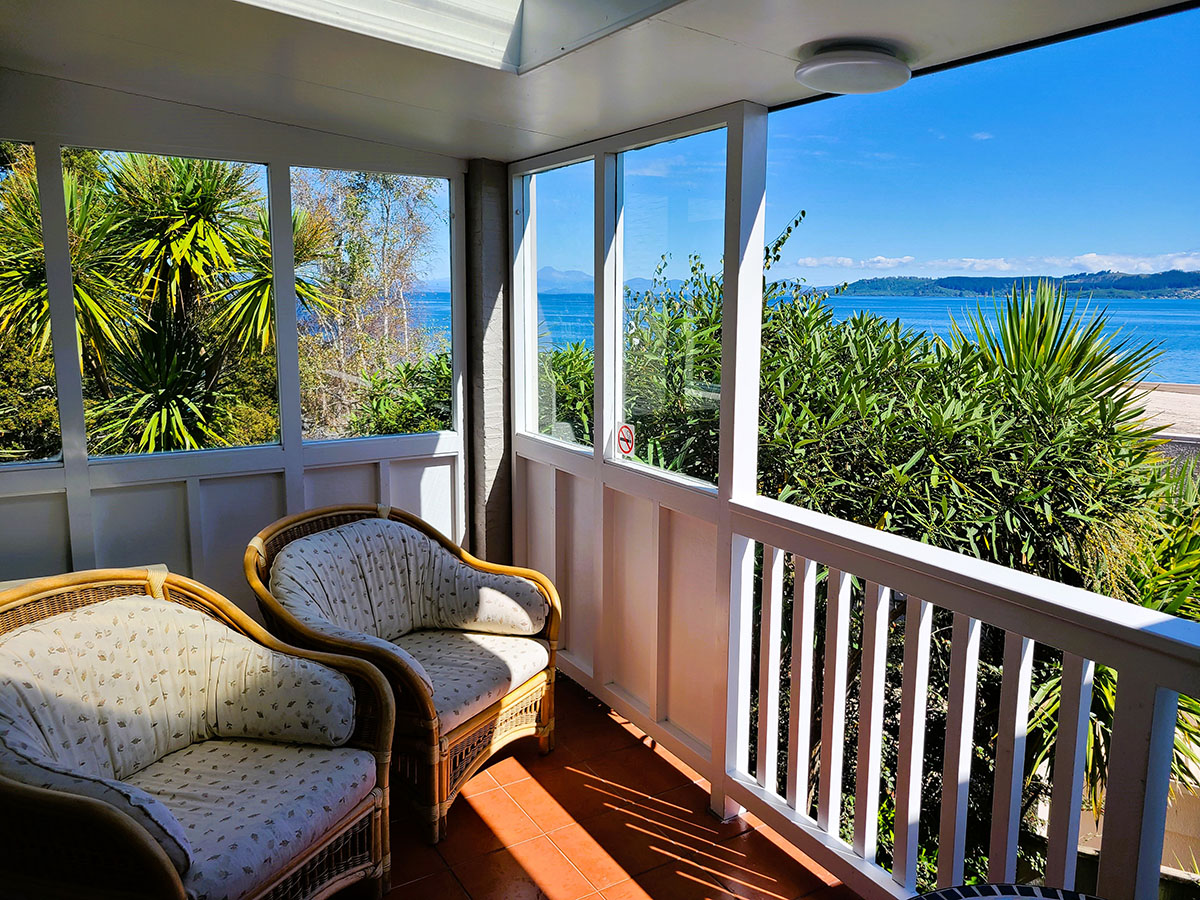 View from our patio at Baycrest Thermal Lodge.
View from our patio at Baycrest Thermal Lodge.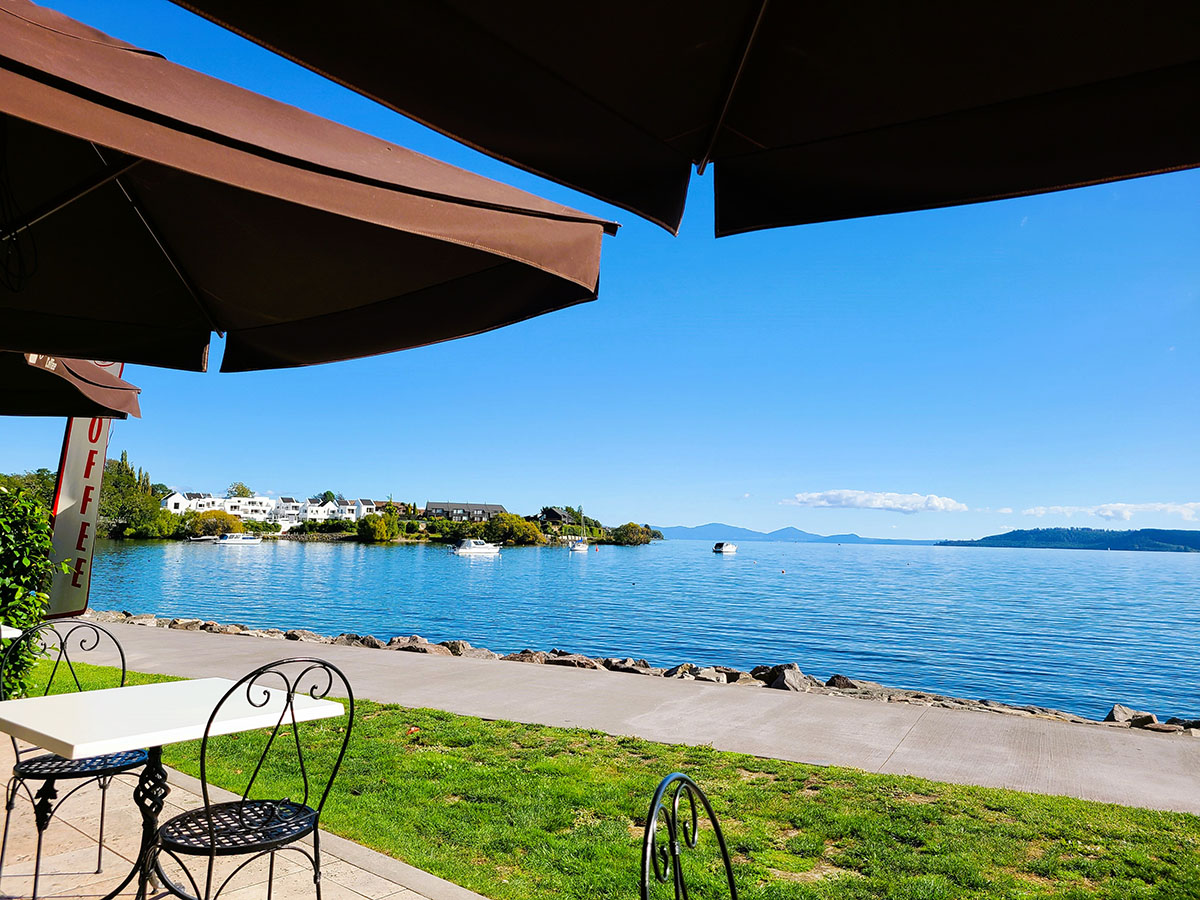 Lunch with a view of Tapuaeharuru Bay.
Lunch with a view of Tapuaeharuru Bay.On day two, we visited the thundering, magnificent Huka Falls and Huka Honey Hive – famous for a wide variety of products all made from their honey bees’ hives: honey ice cream; hand, face, and body creams; natural remedies; candles; soaps; and more. It’s fascinating.
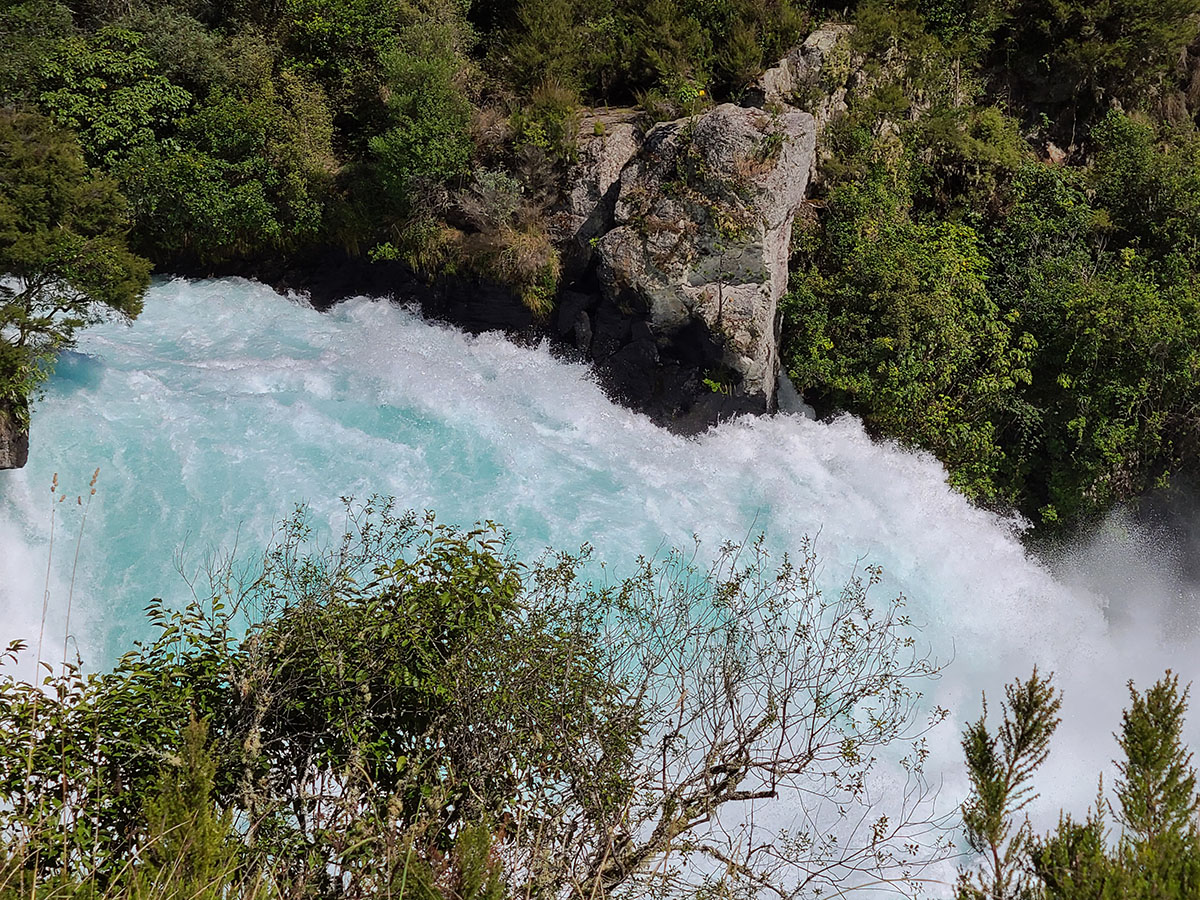
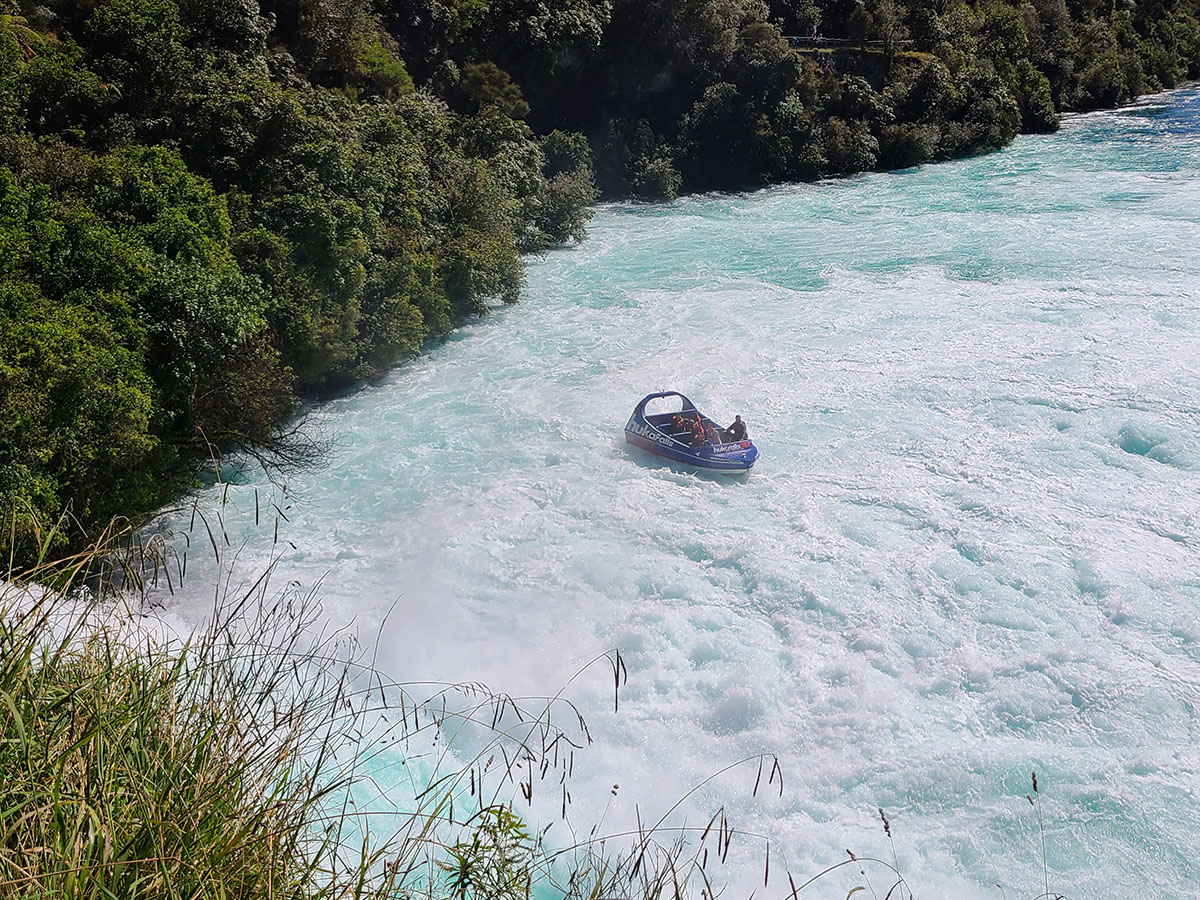
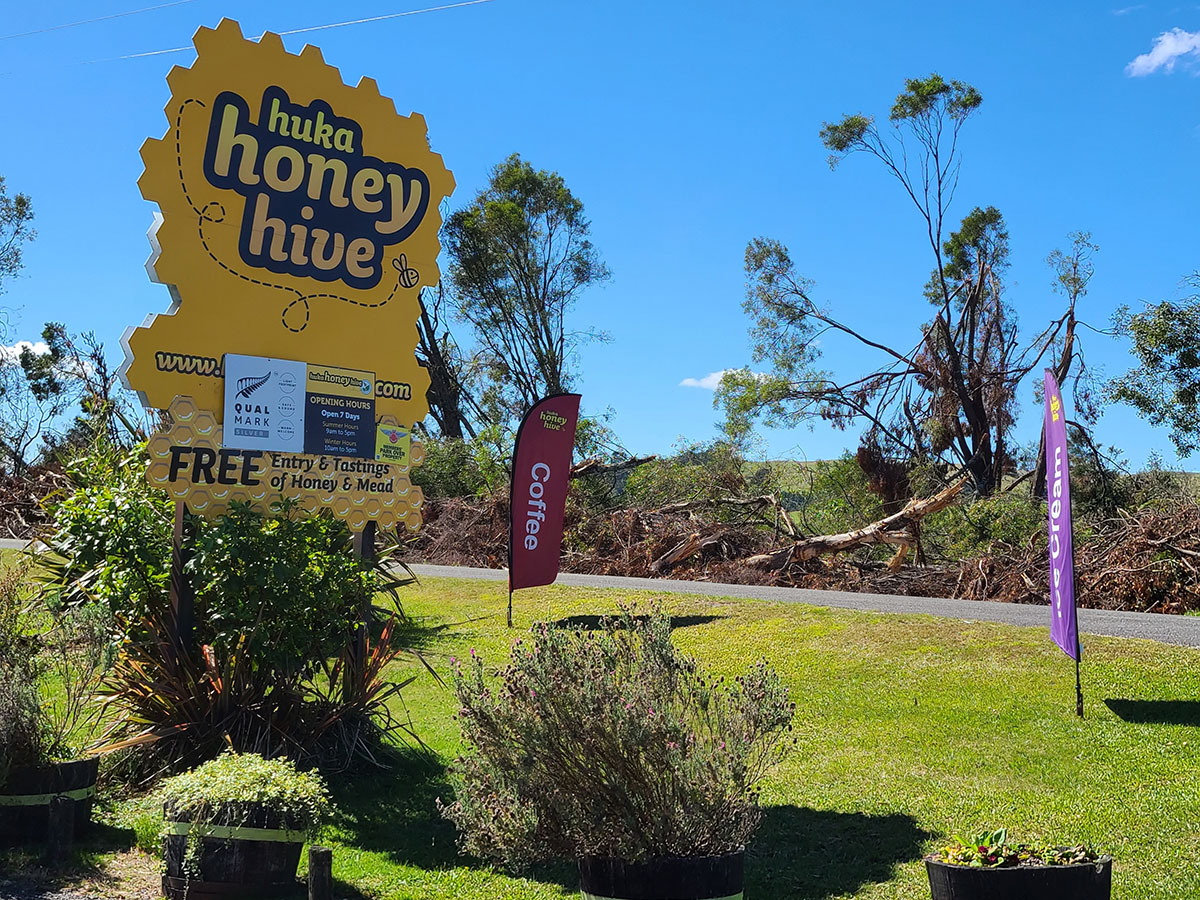
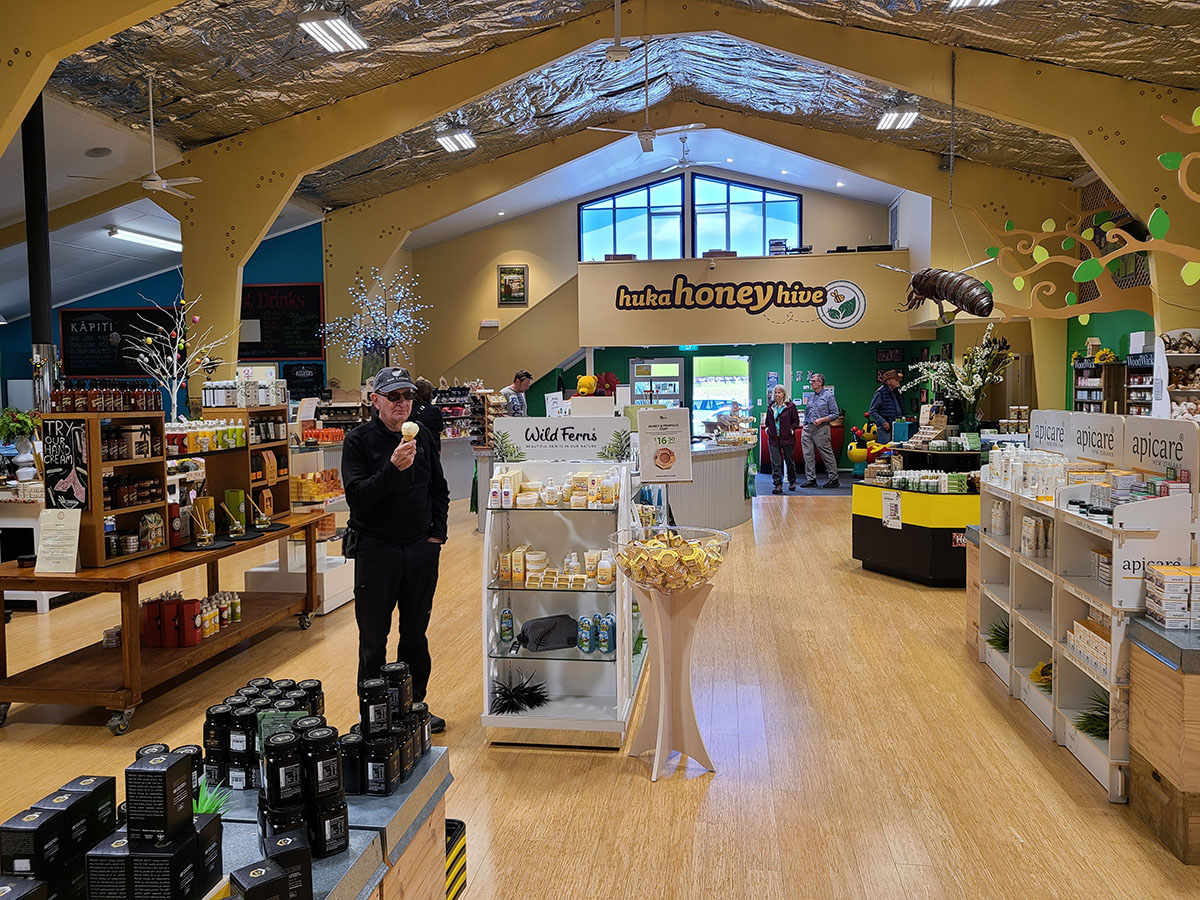
The SPA Thermal Park‘s hot spring bathing pool is an authentic thermal bath created and surrounded by nature. It’s a rare treat.
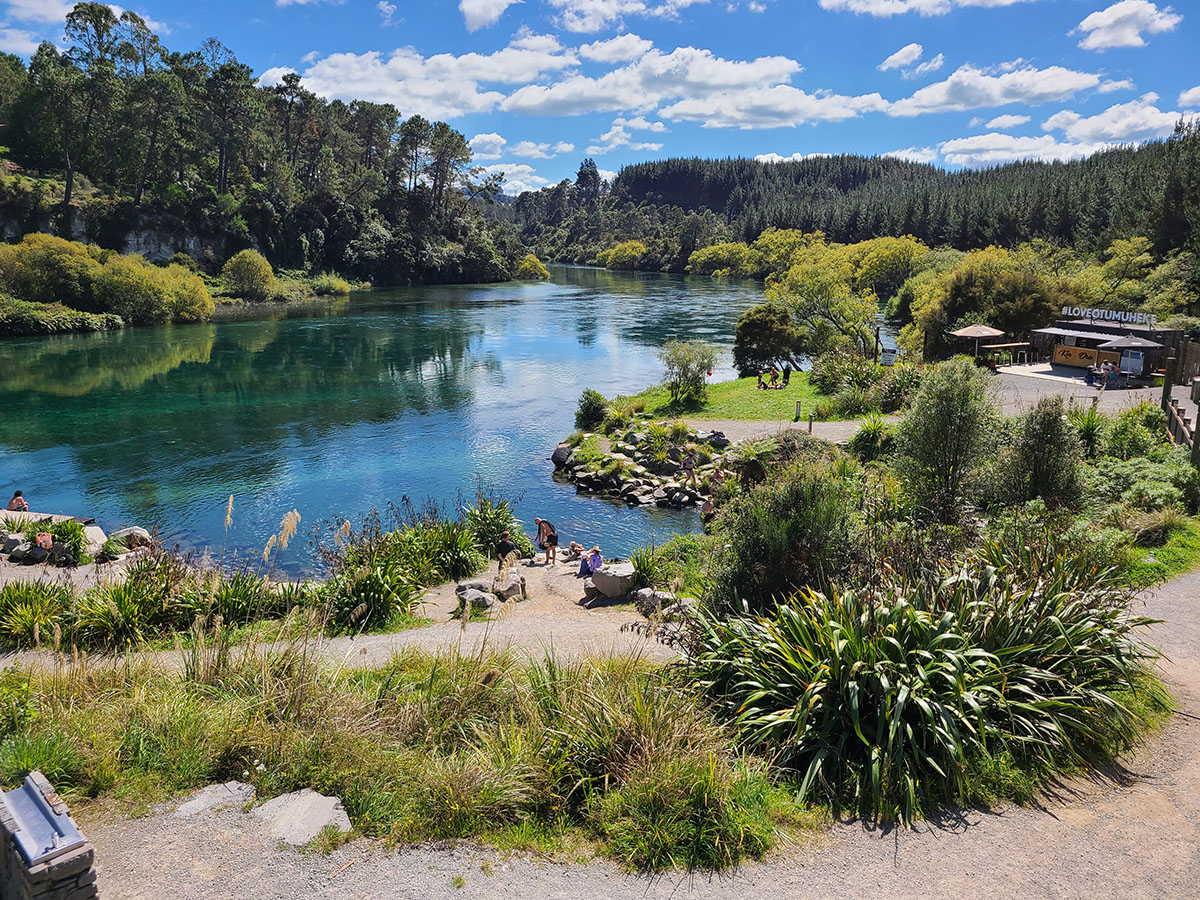
WELLINGTON is the windiest city in New Zealand, where one can literally be blown off one’s feet in the harbor area. While the city itself is not very impressive, the Harbor area has old-world charm and beautiful views of the surrounding neighborhoods where houses cling to the forested hills. It has a variety of restaurants, and The Museum of New Zealand, which is worth a visit.
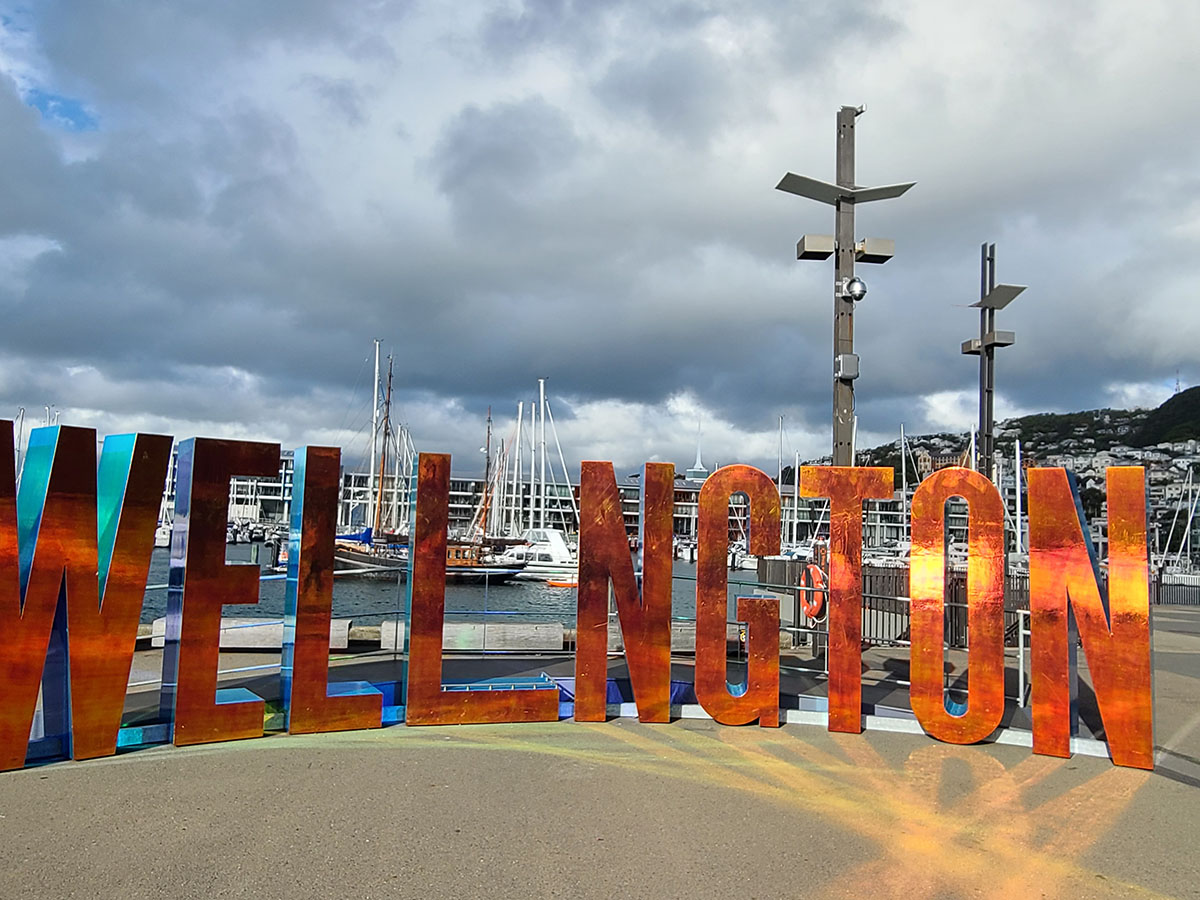
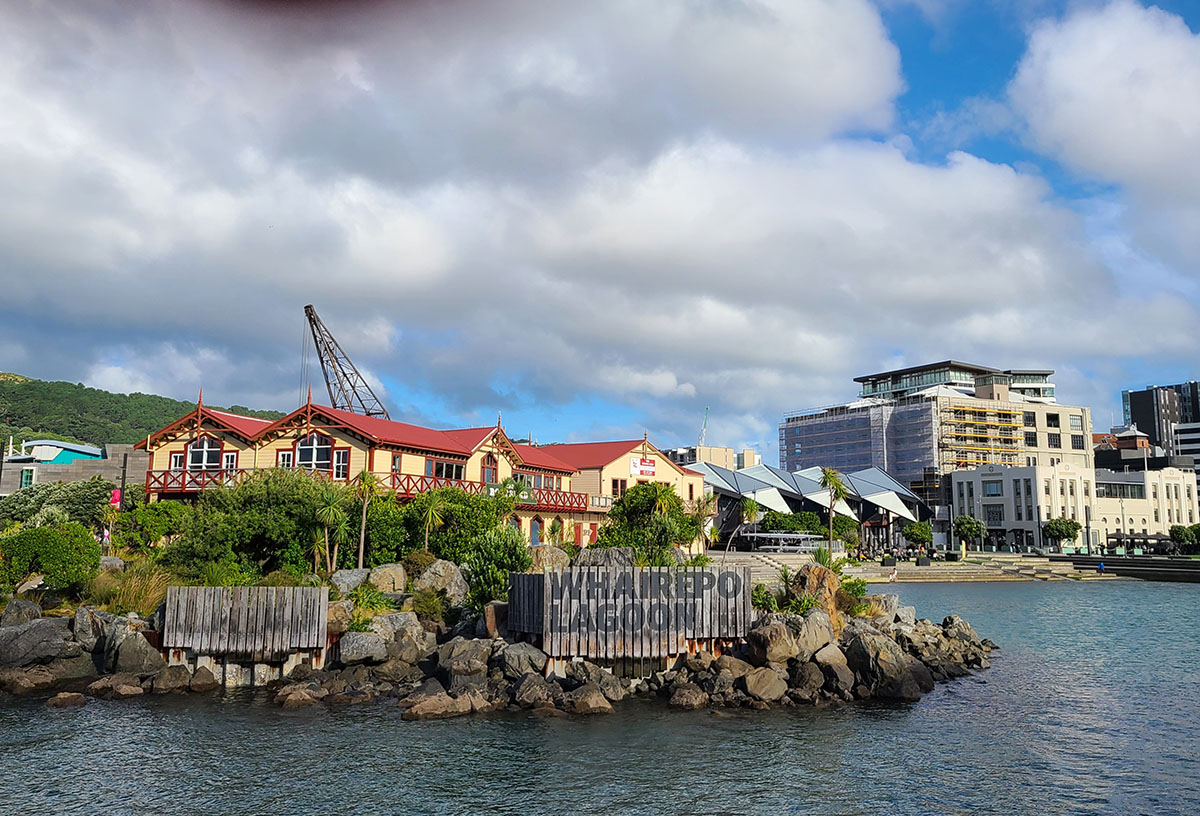
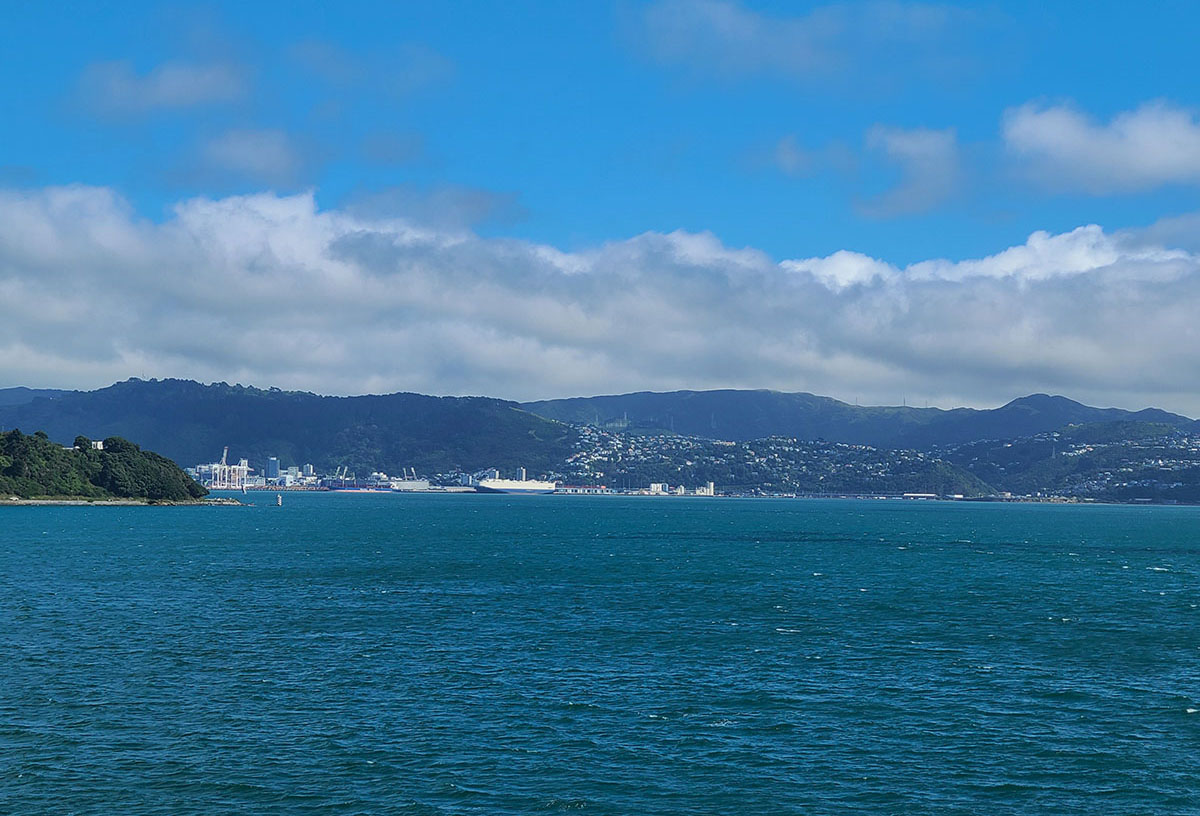
After spending two nights in Wellington, we caught the ferry to the South Island.
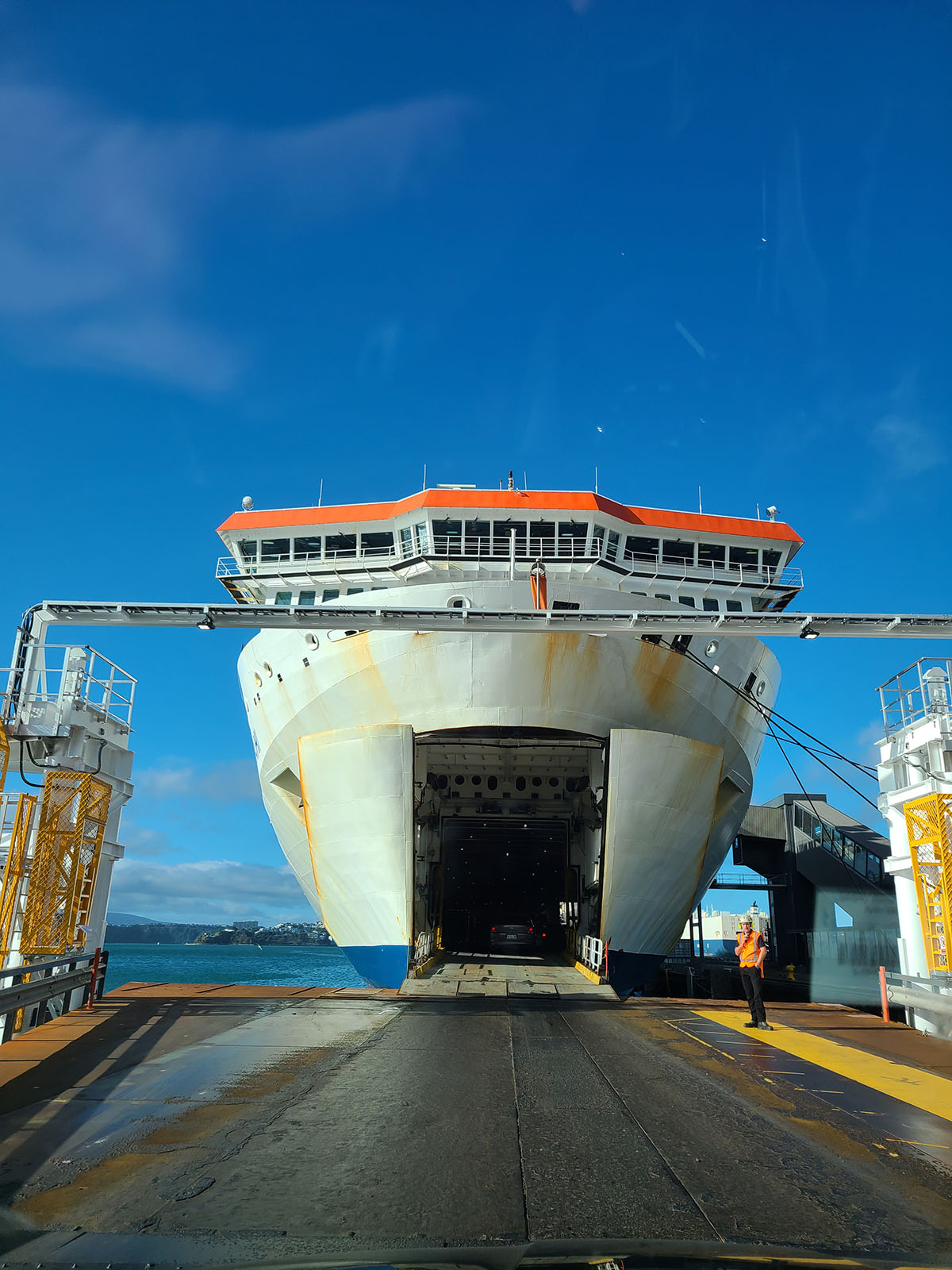 Driving onto the ferry, for the crossing to the South Island.
Driving onto the ferry, for the crossing to the South Island.** Be aware that the Islander Ferry has a shocking reputation for changing departure times and canceling departures for days and sometimes weeks at a moment’s notice.
We were fortunate that our ferry did depart on the scheduled day, albeit three hours late. We were lucky!
As an alternative, one can fly to the South Island from Wellington. If you have rented a car, this means returning the car in Wellington and hiring another one on the South Island, which could be inconvenient and a waste of time.
**Read my next article that takes you on a journey to the South Island.
